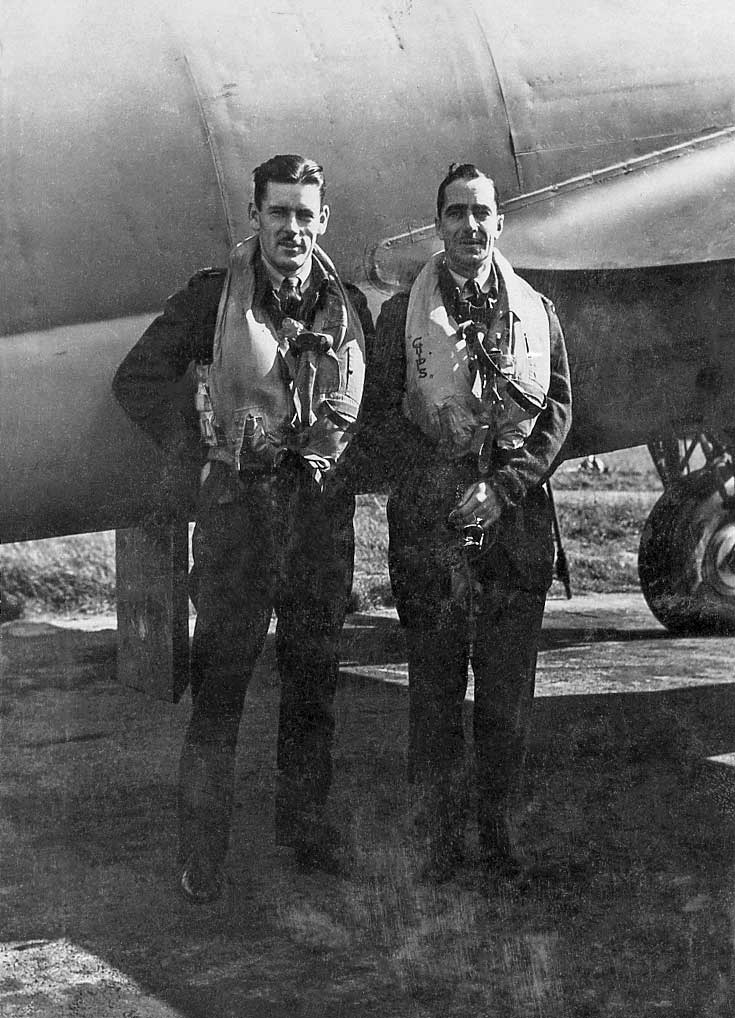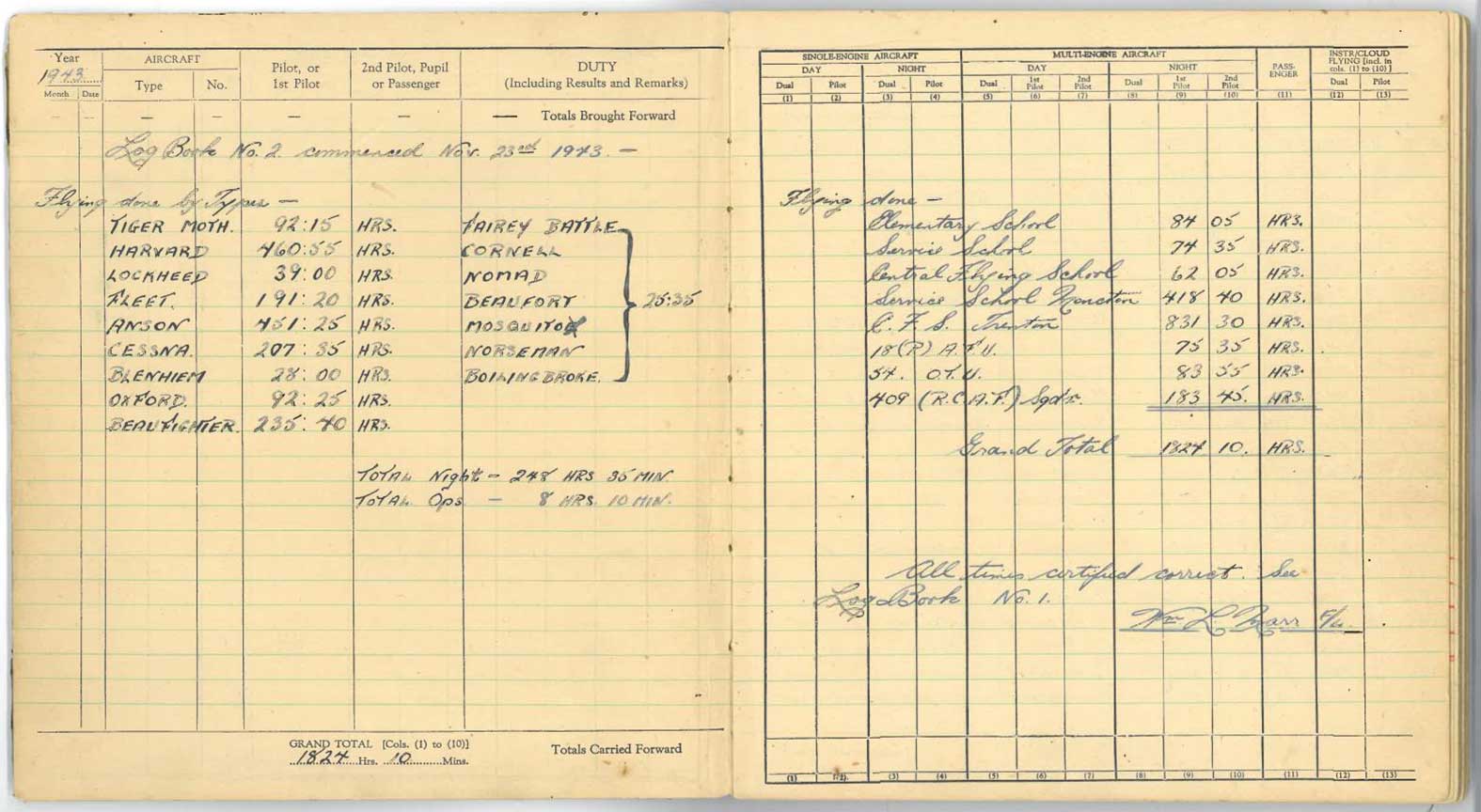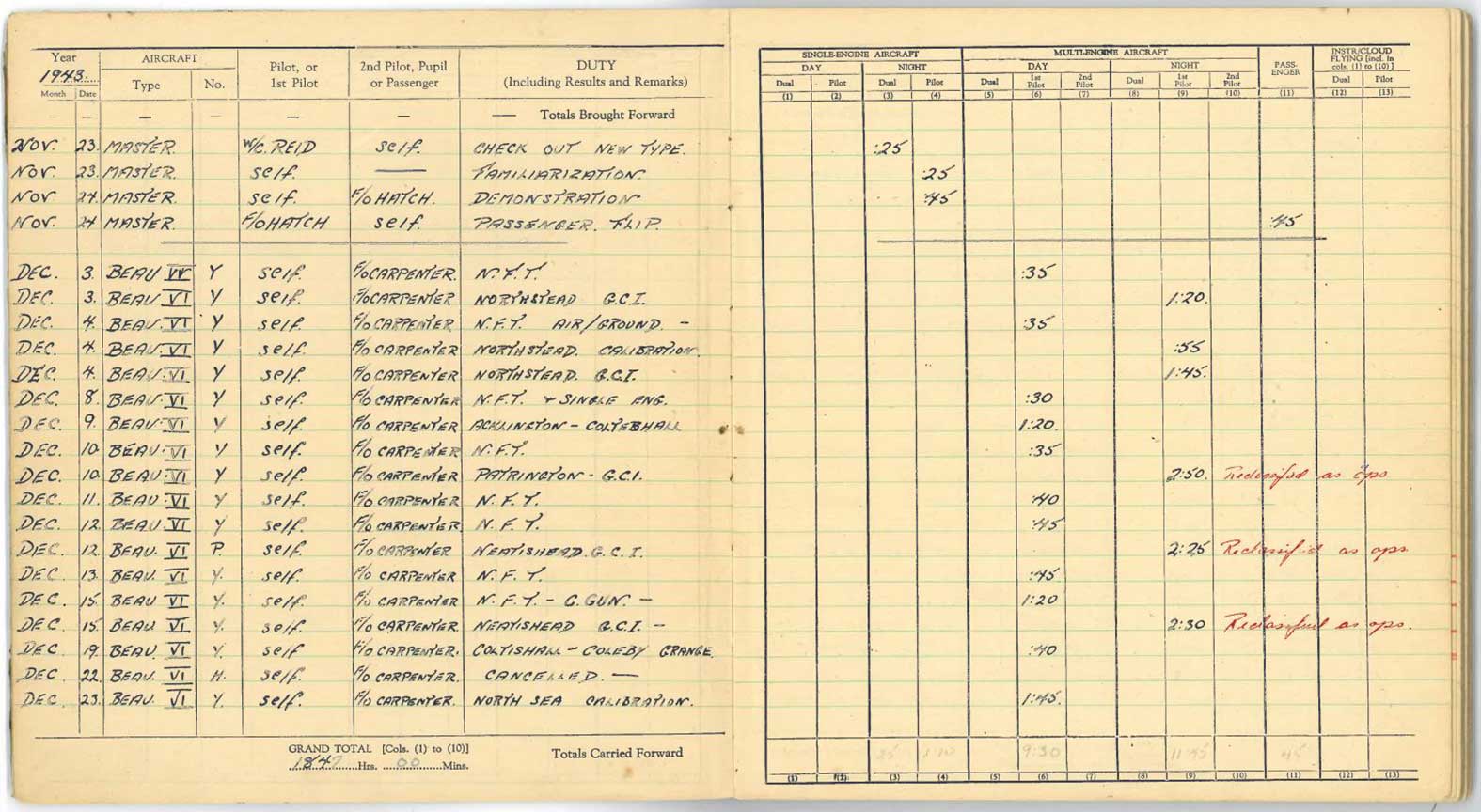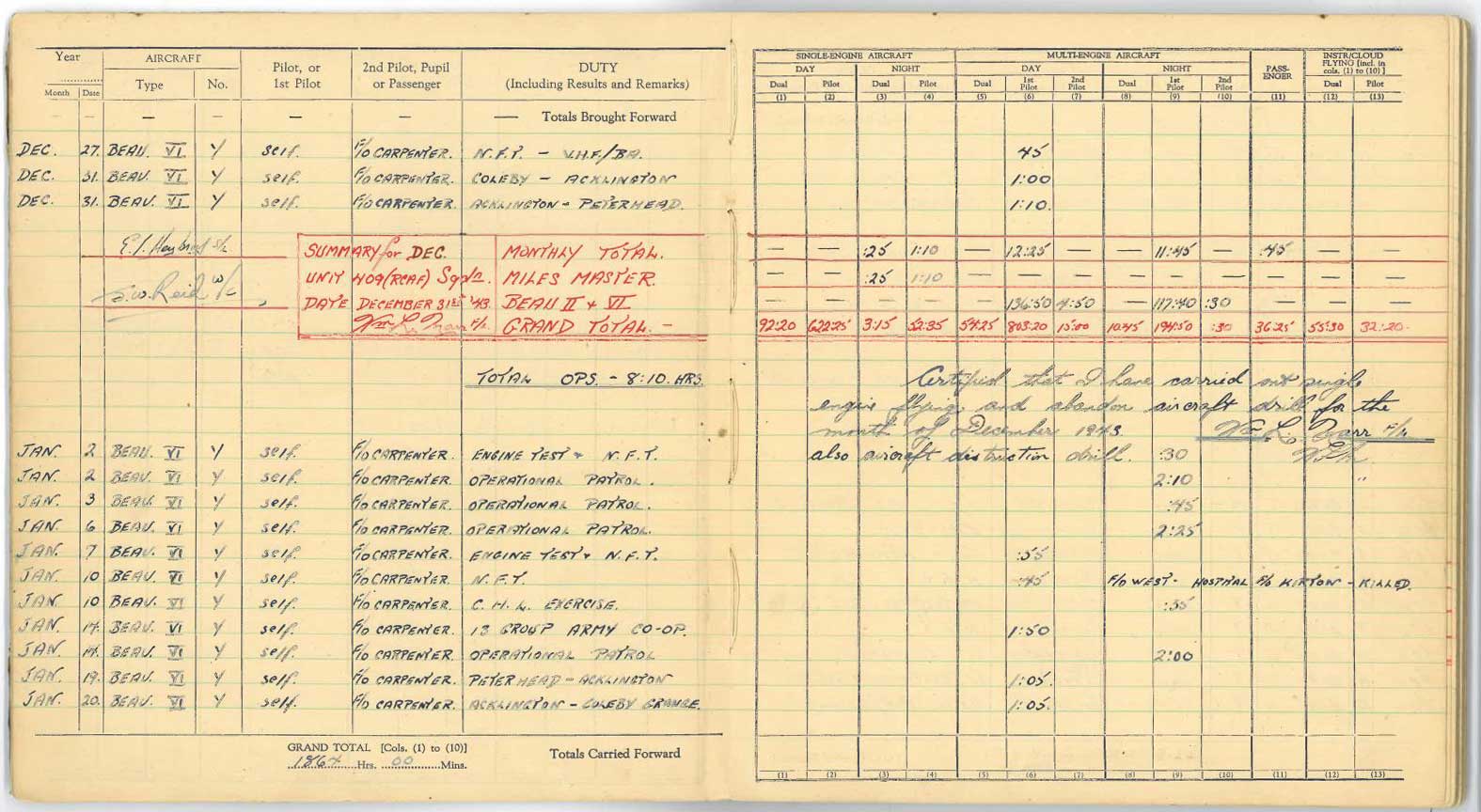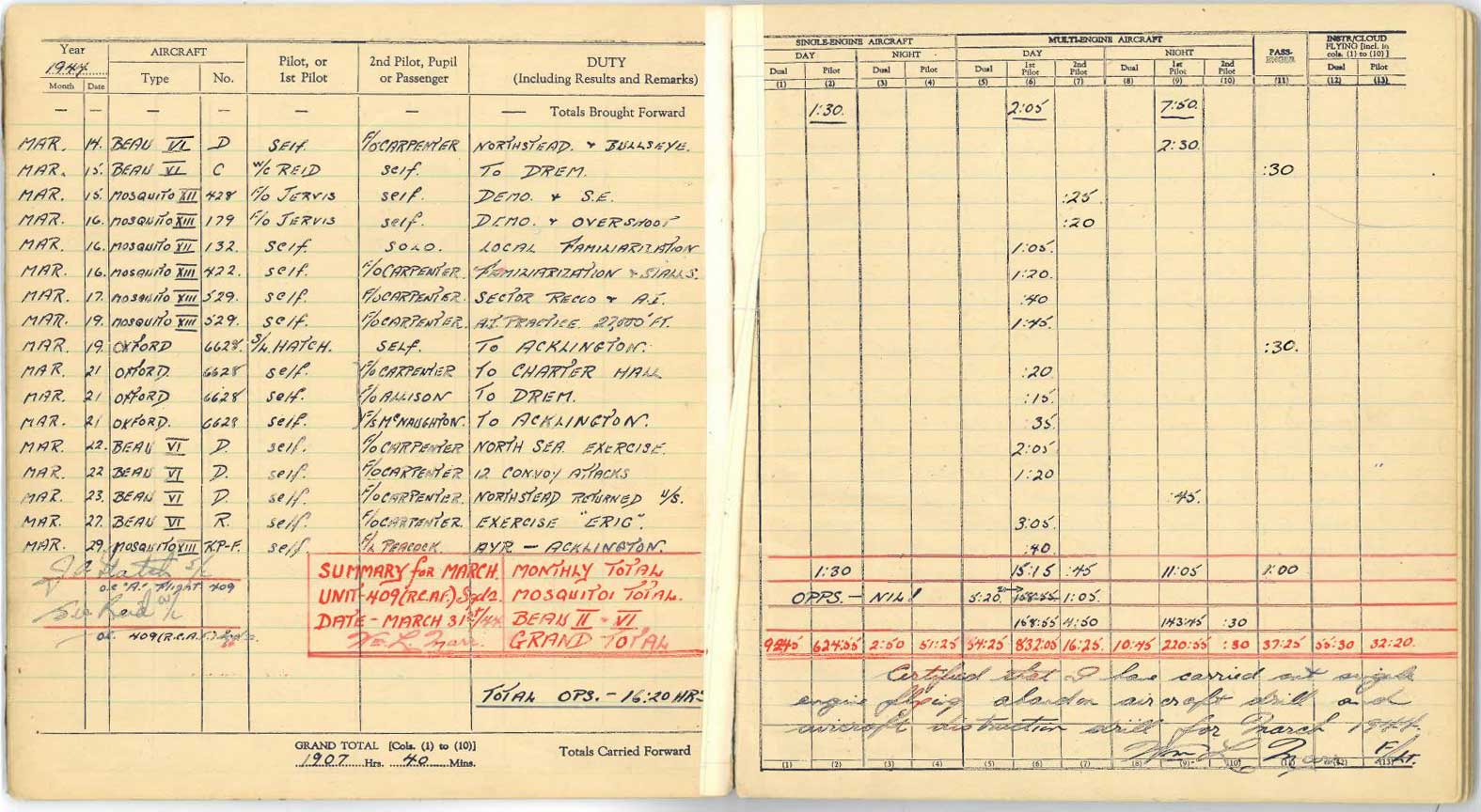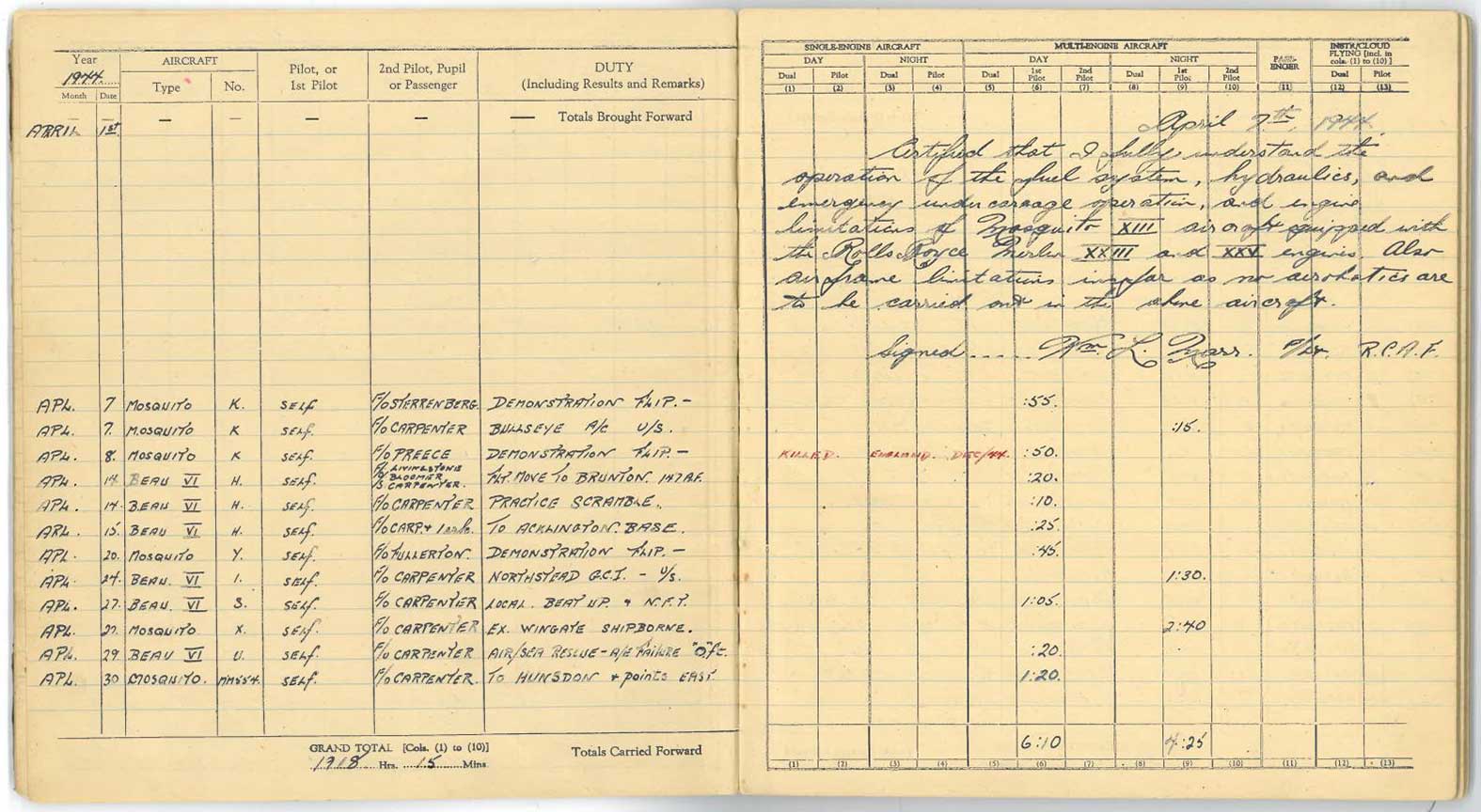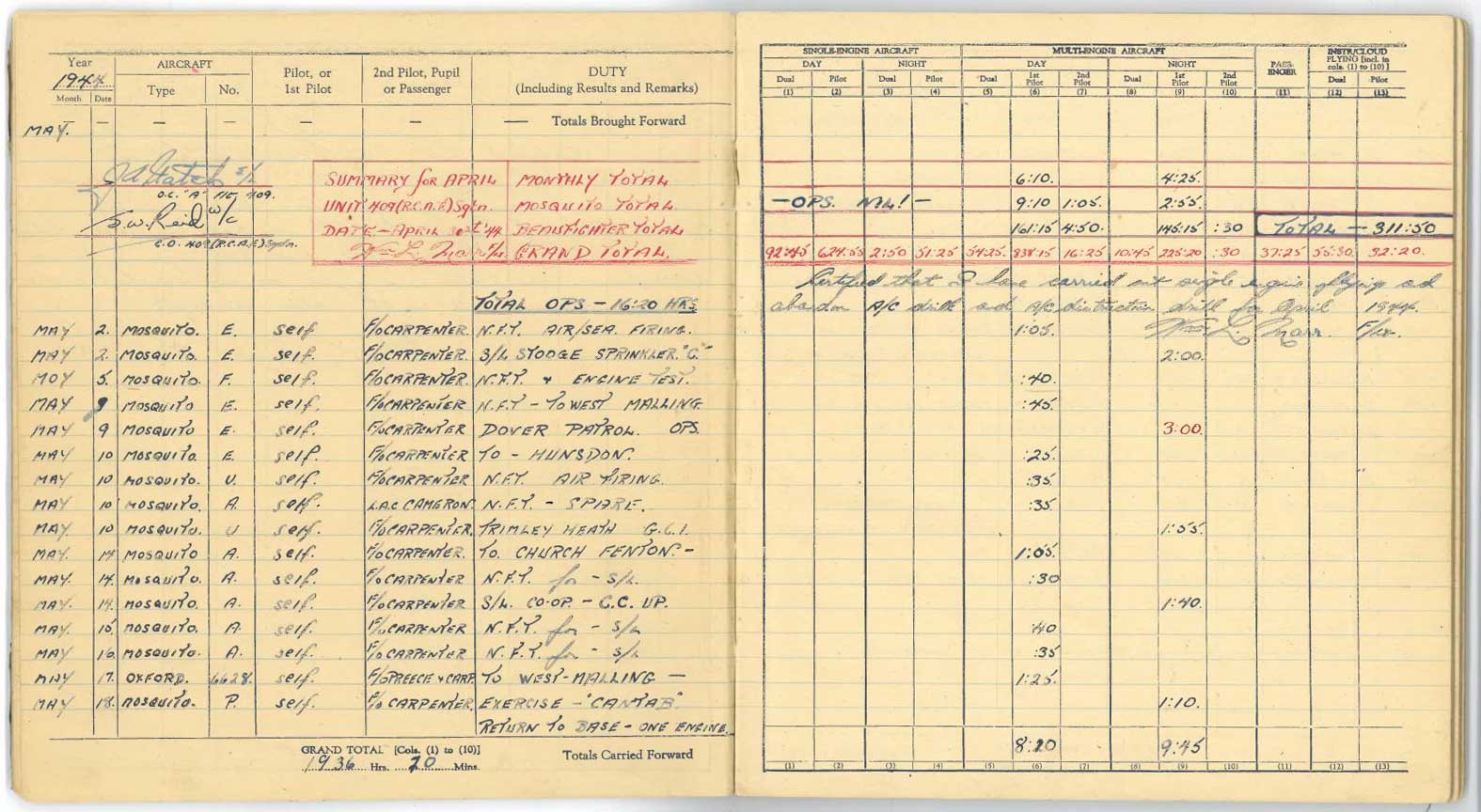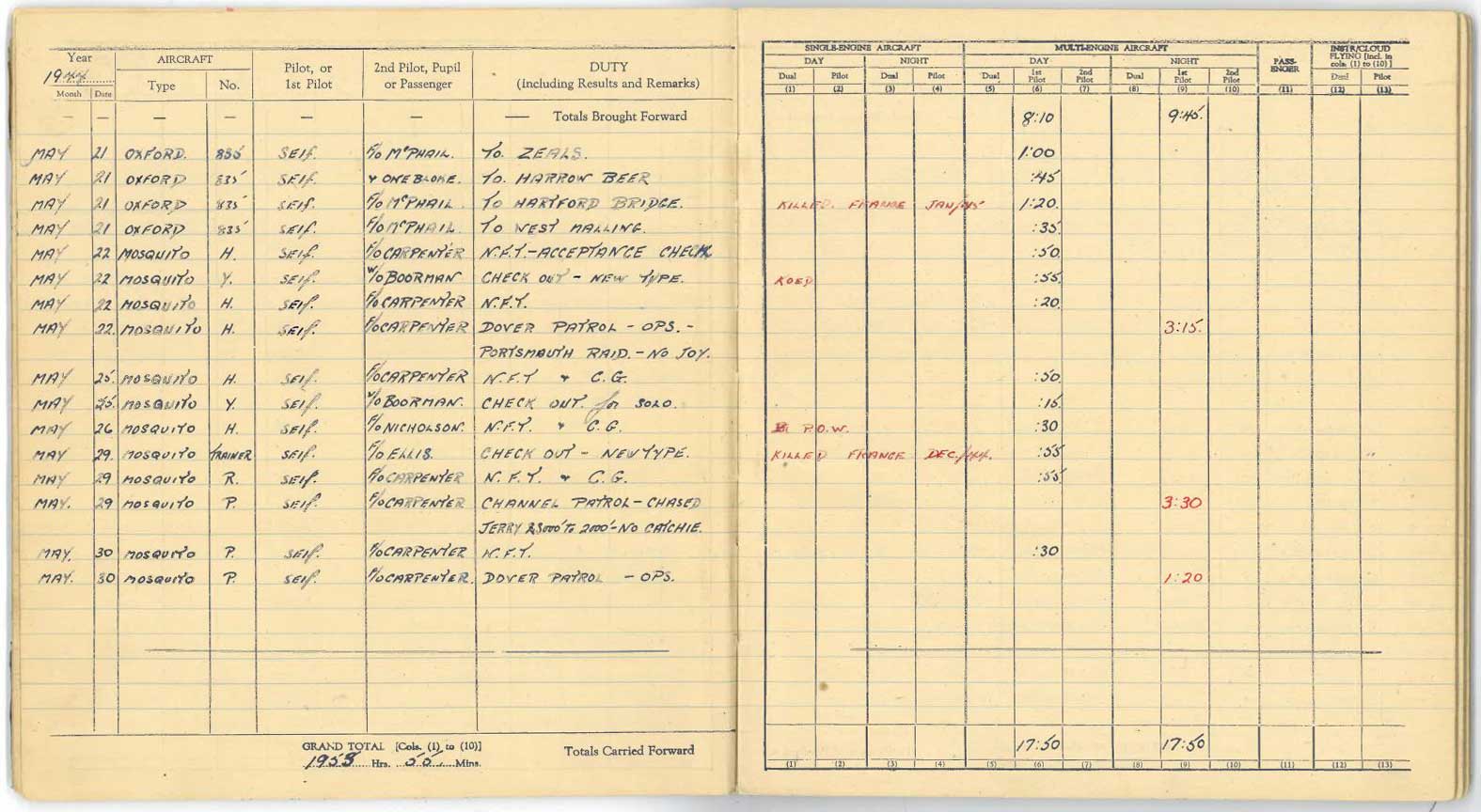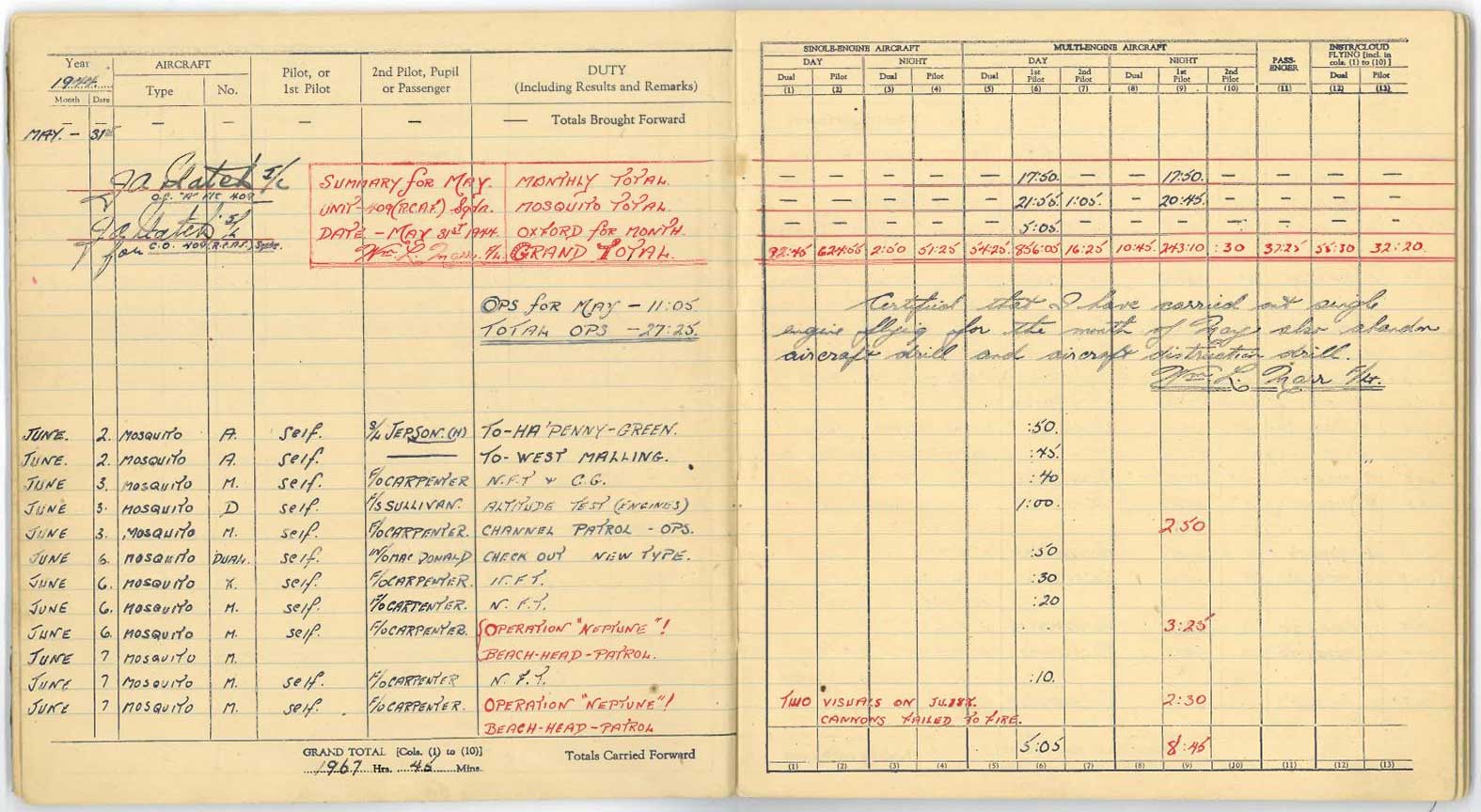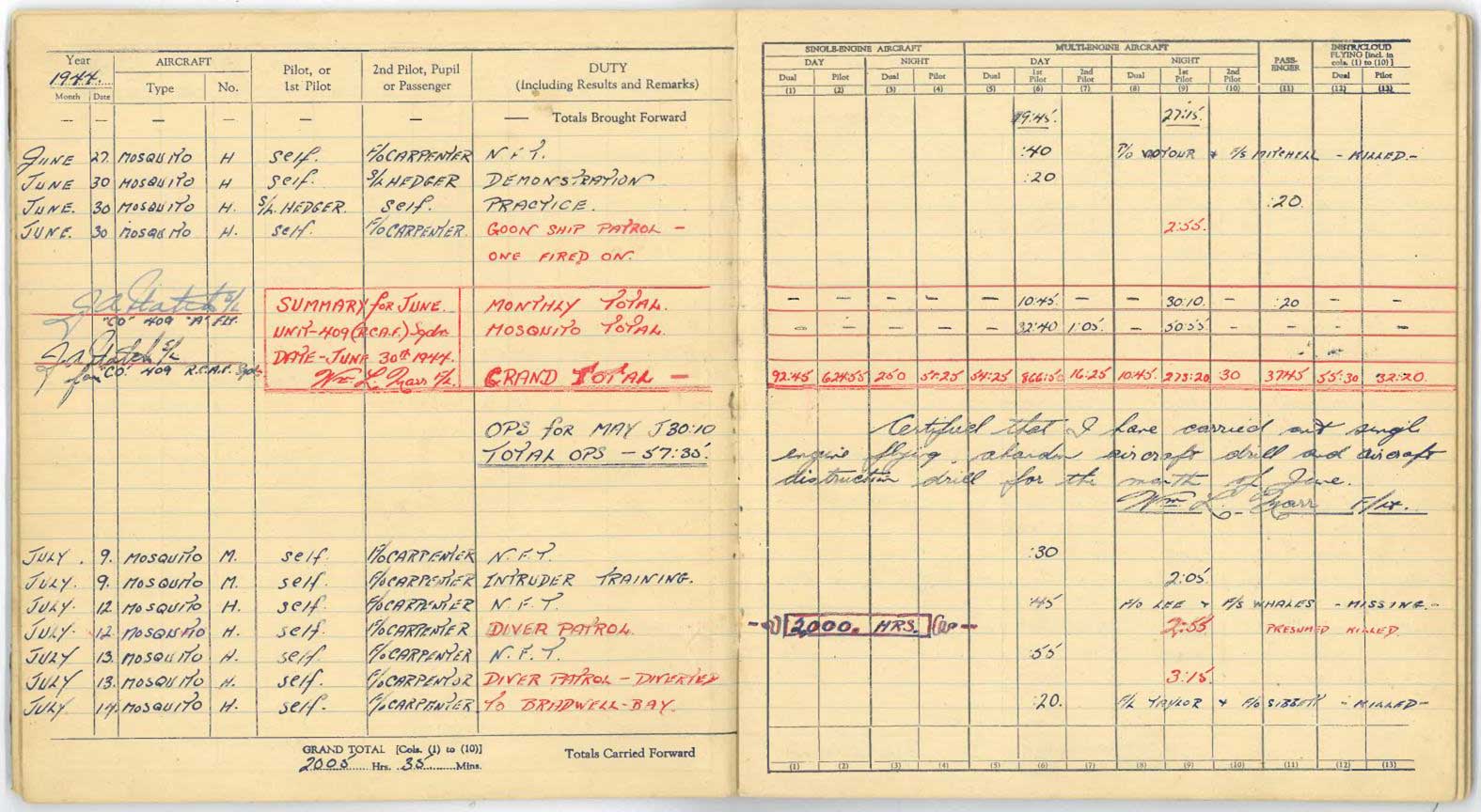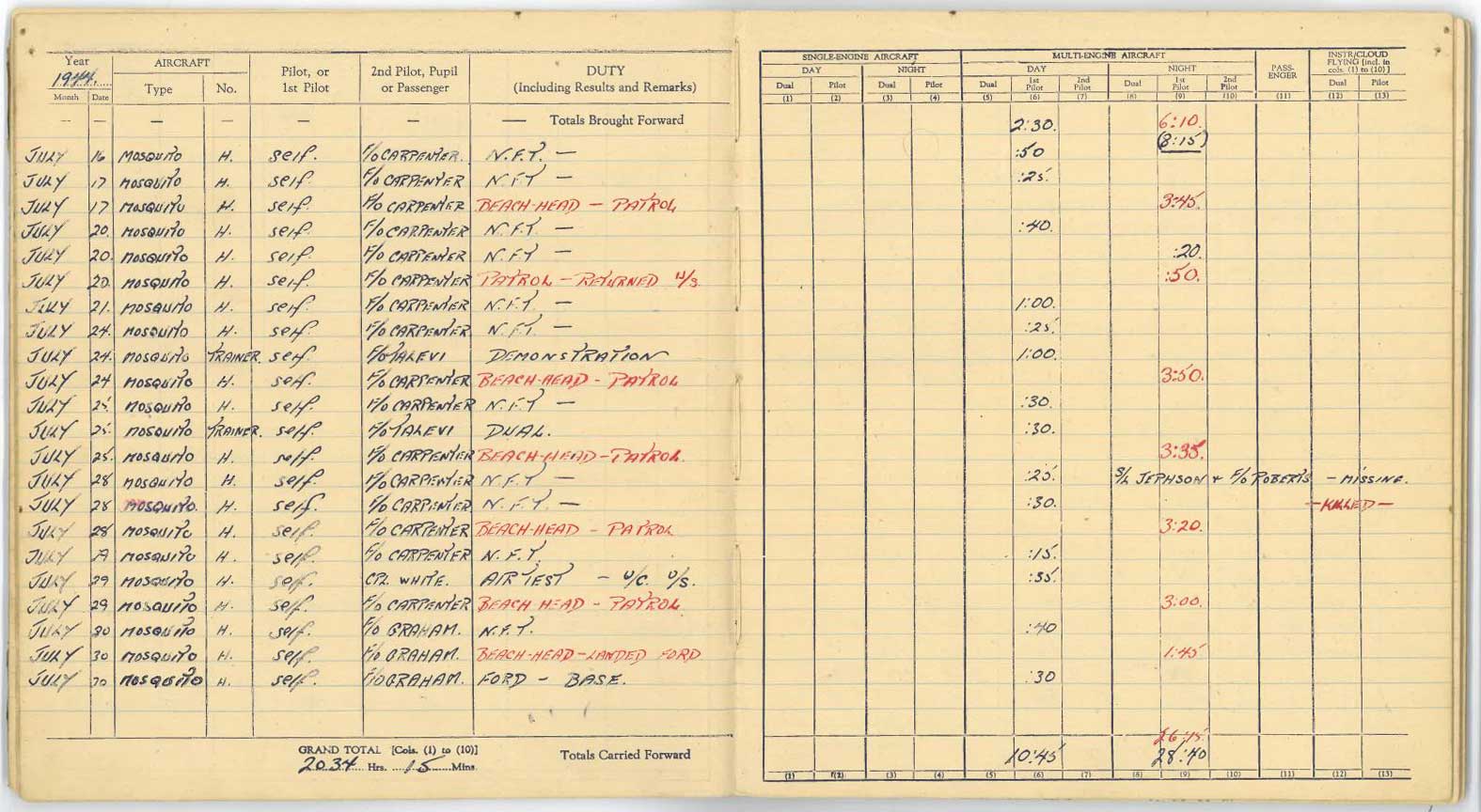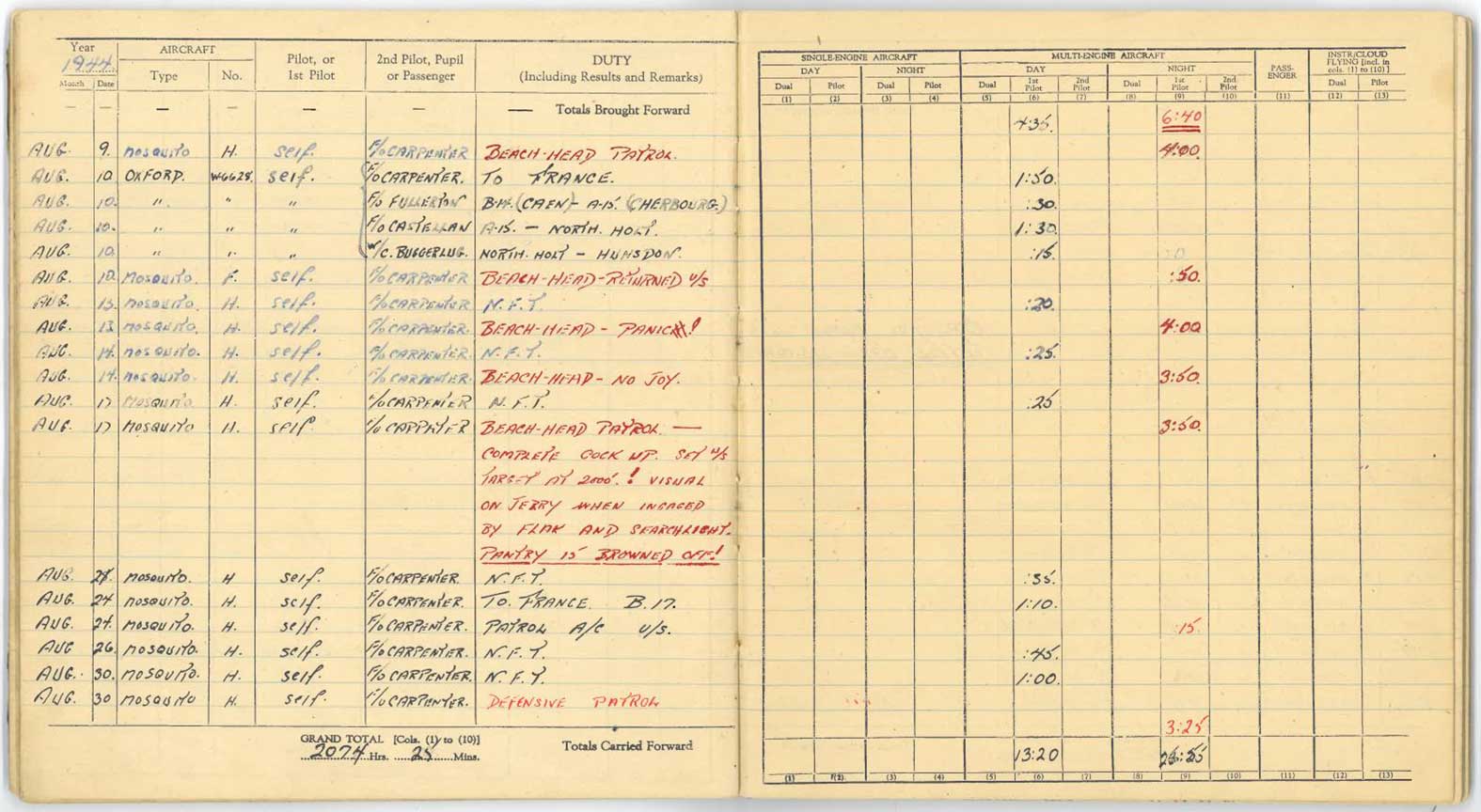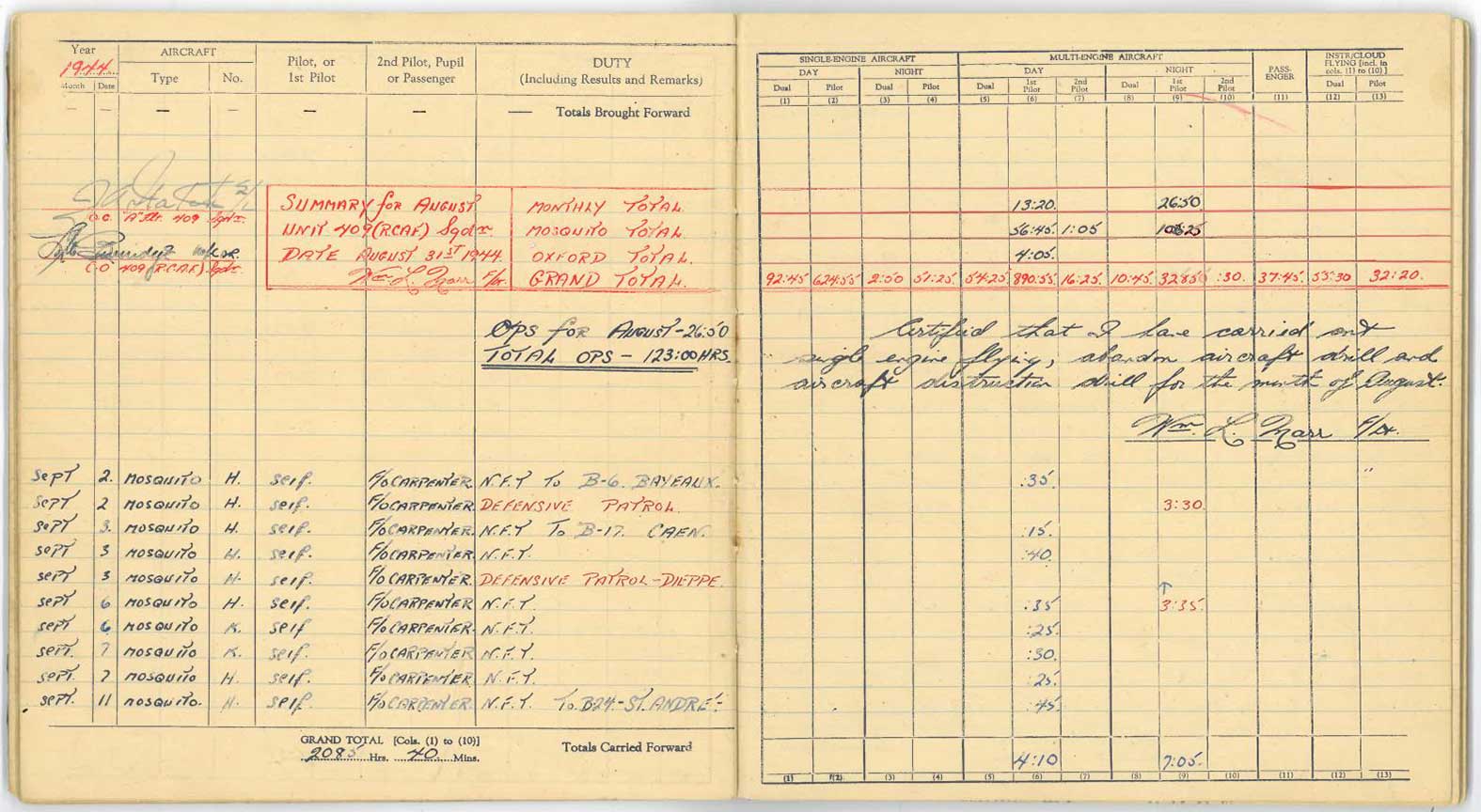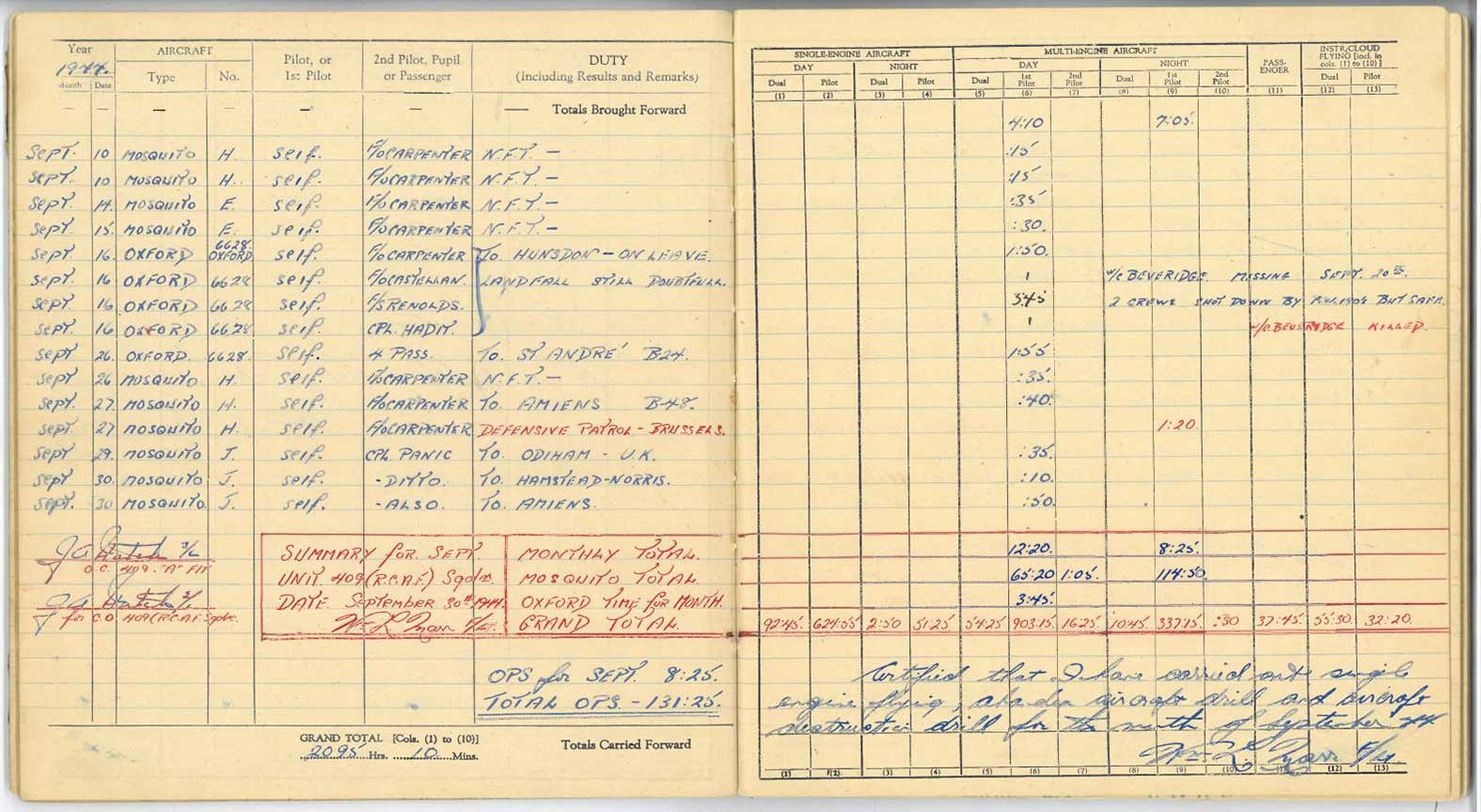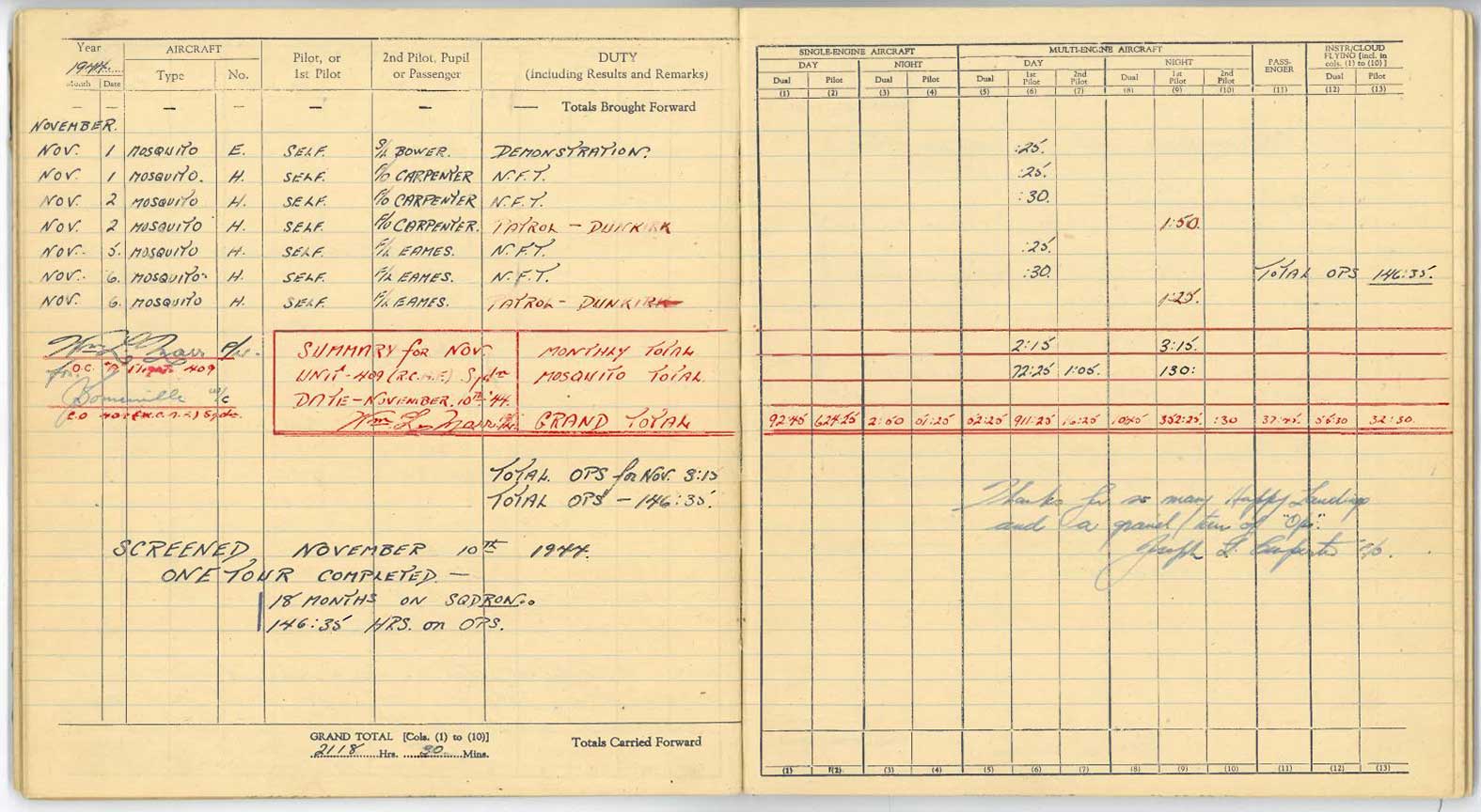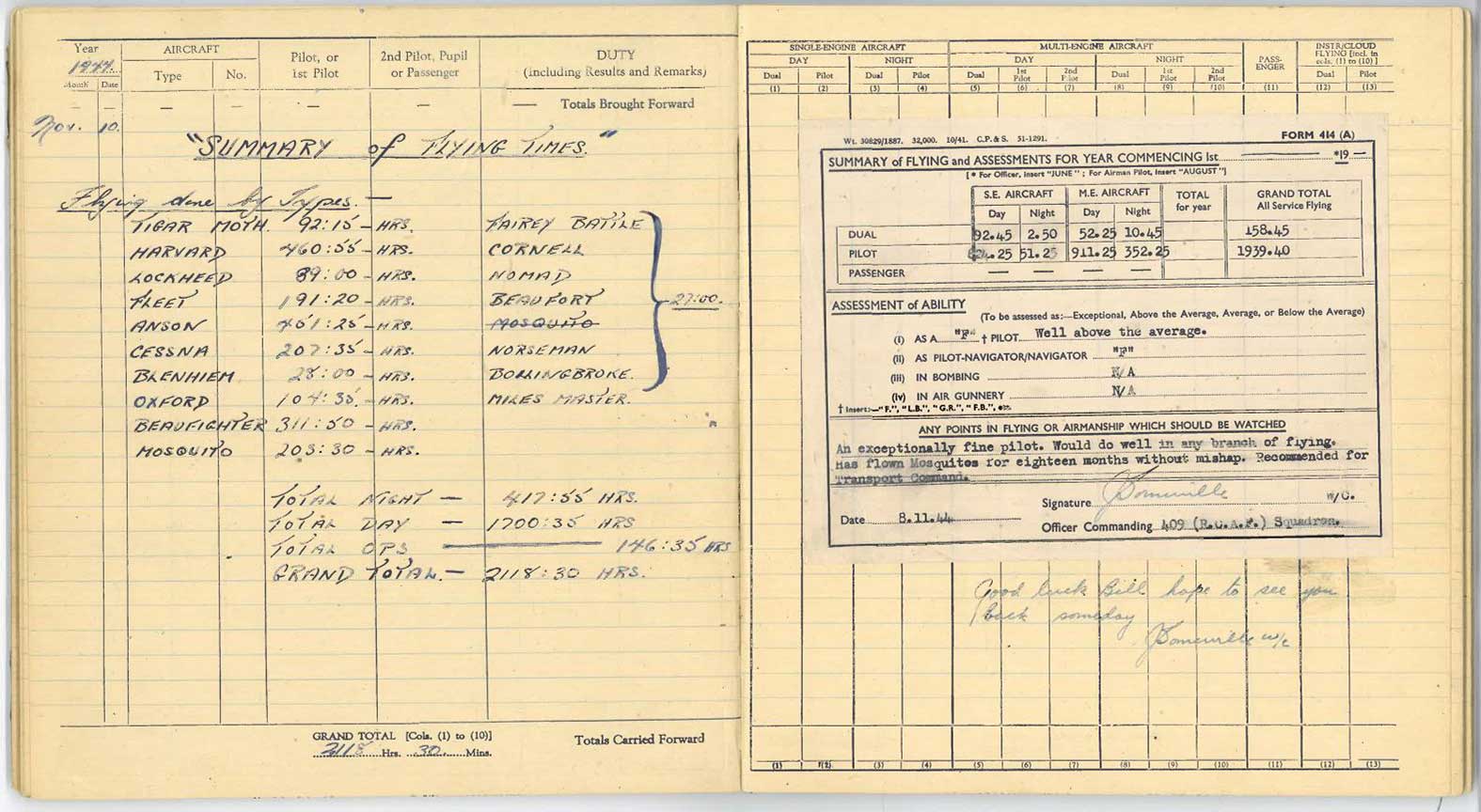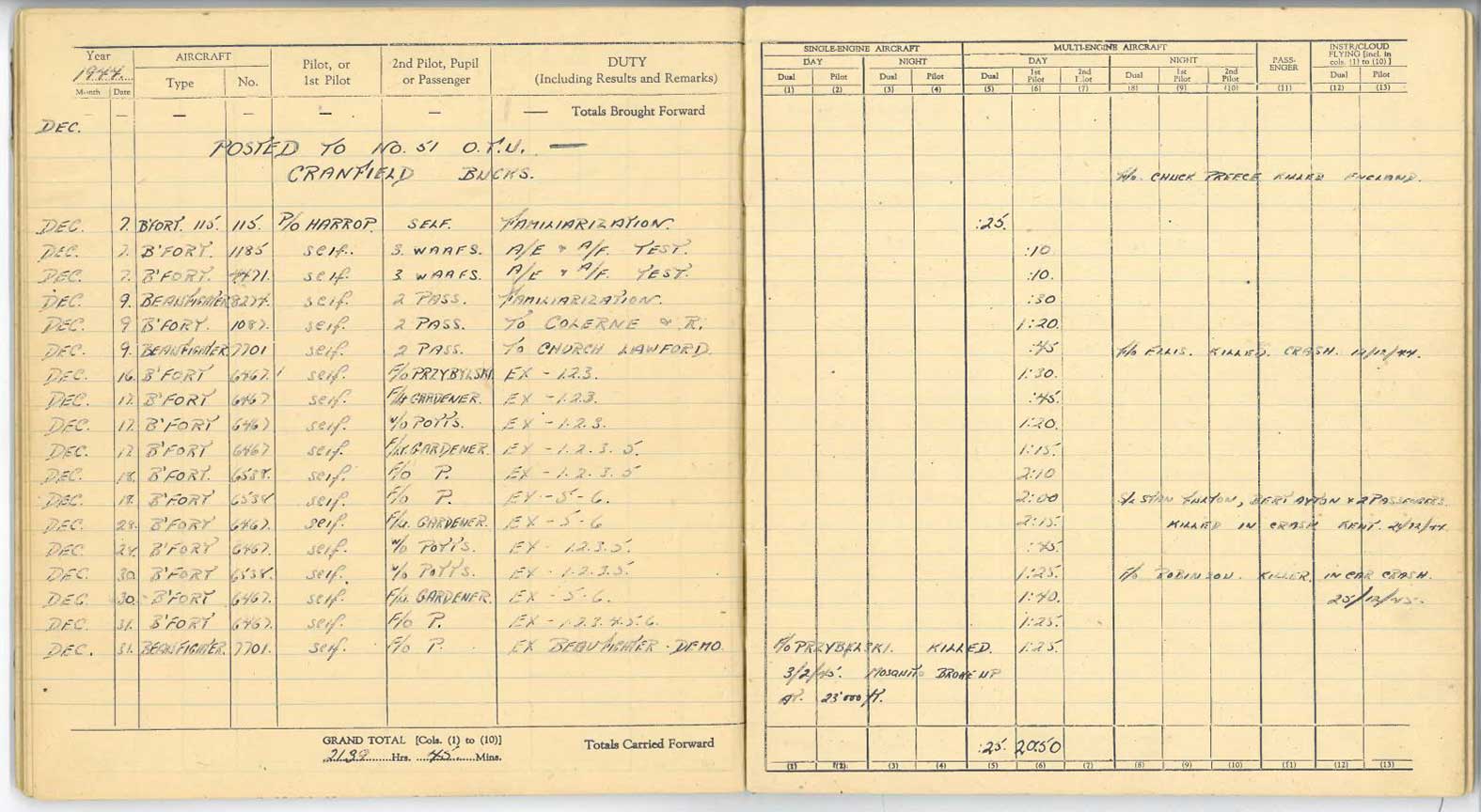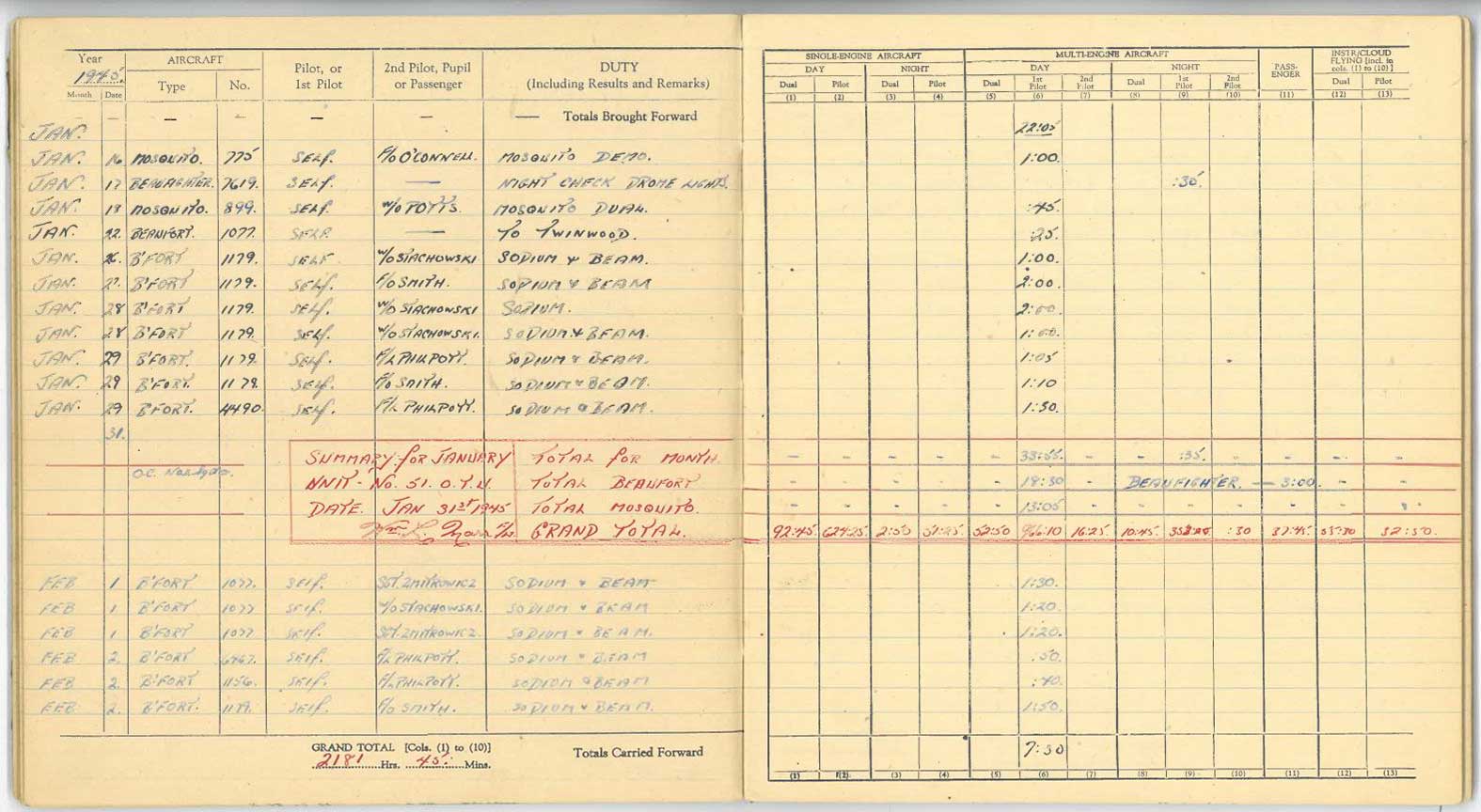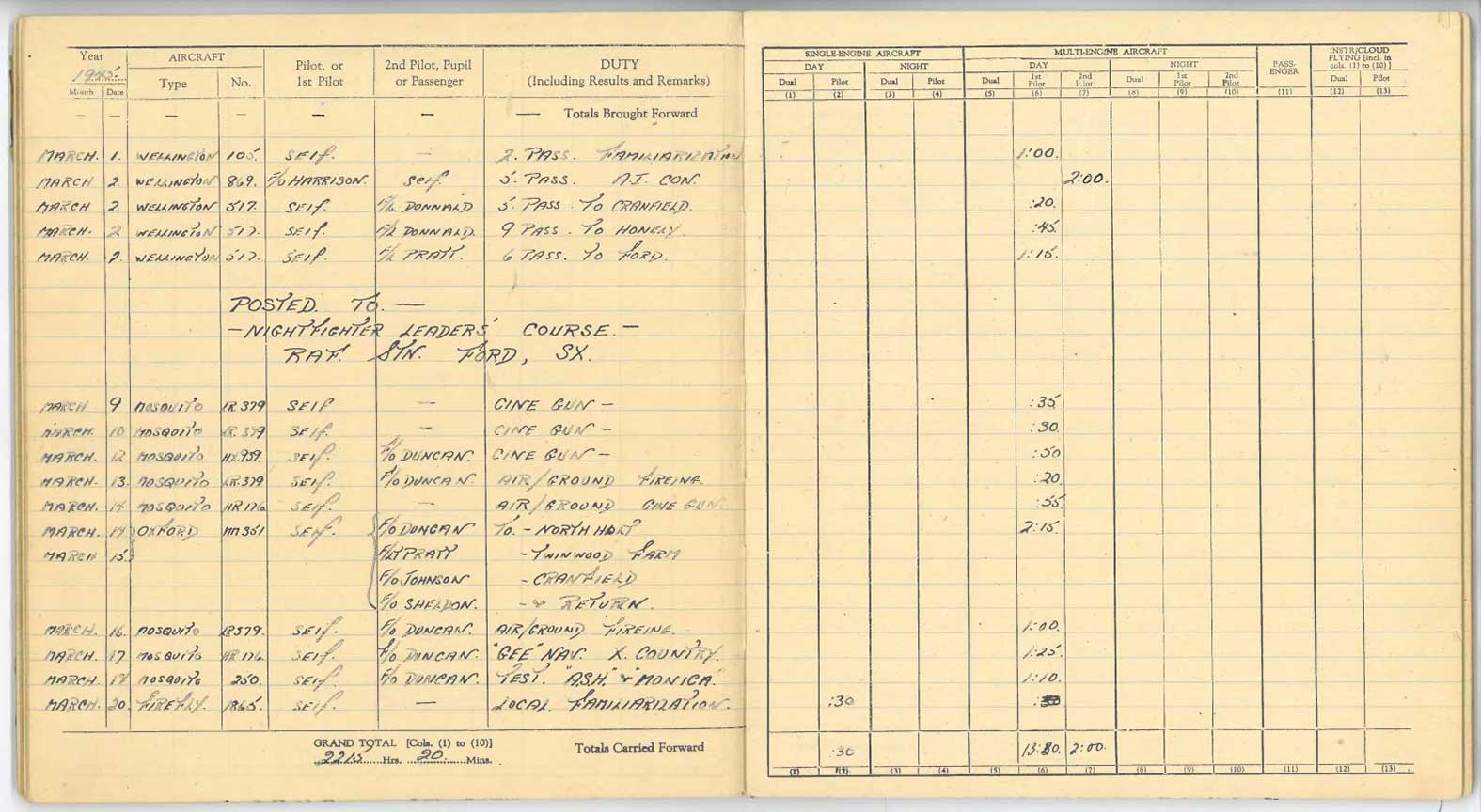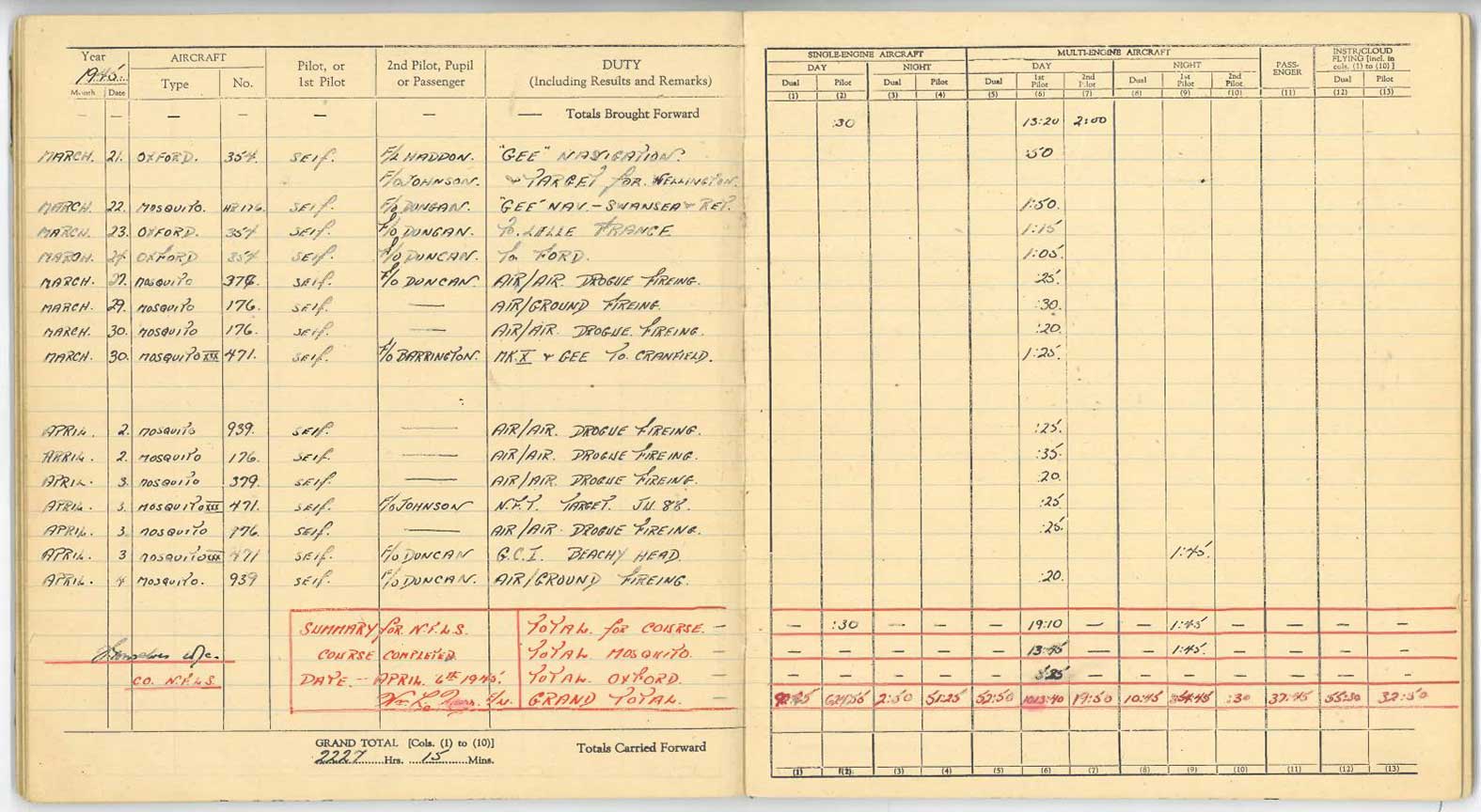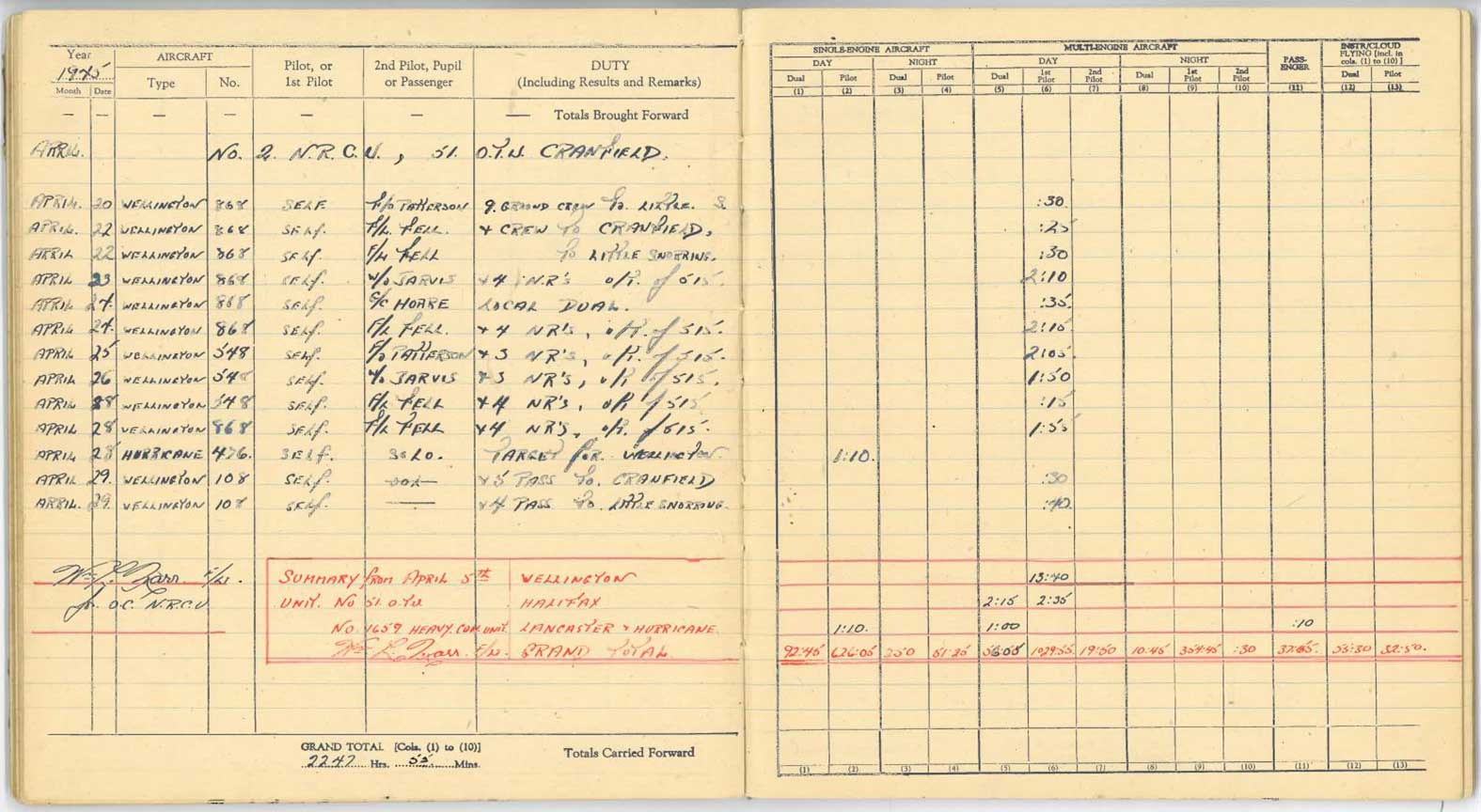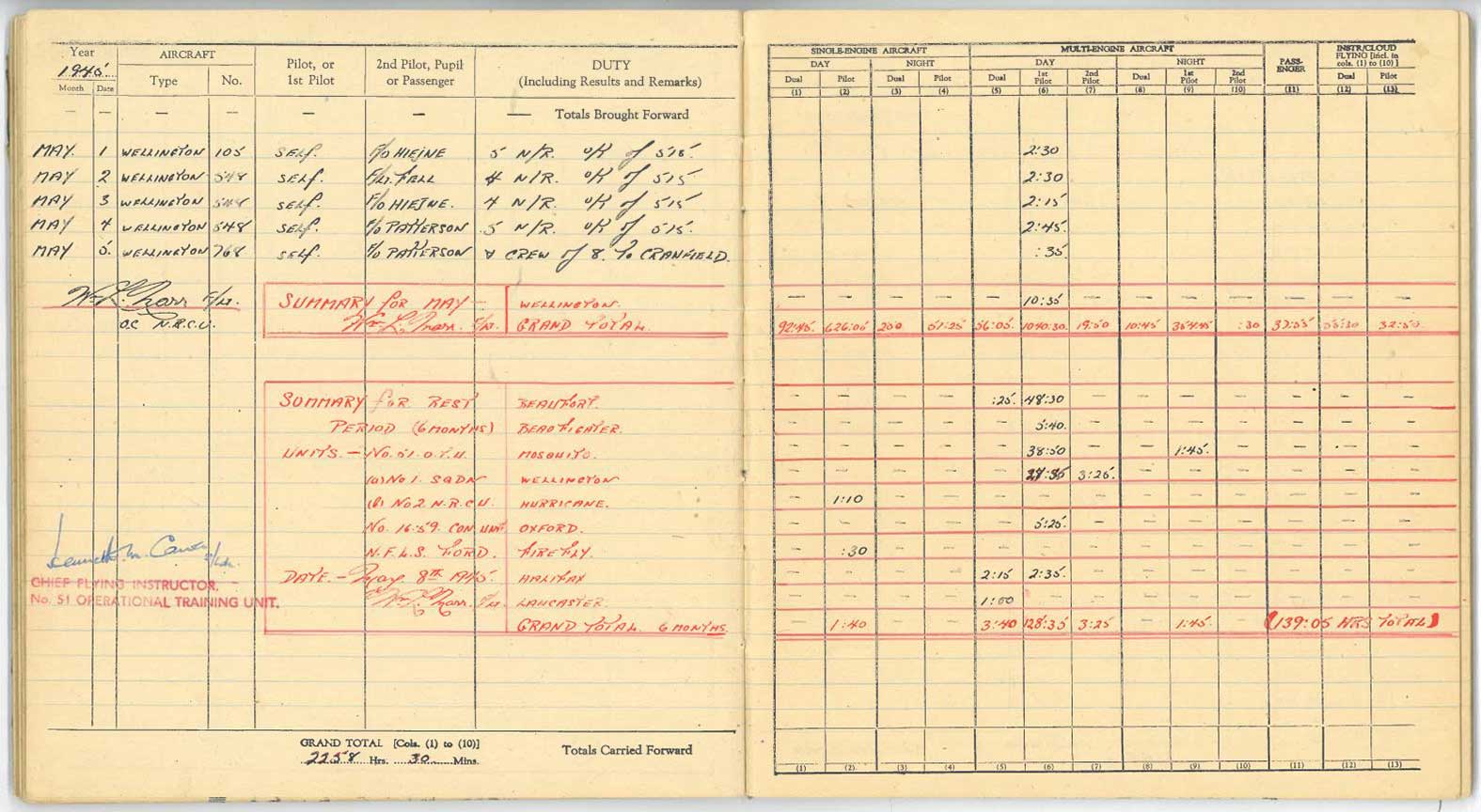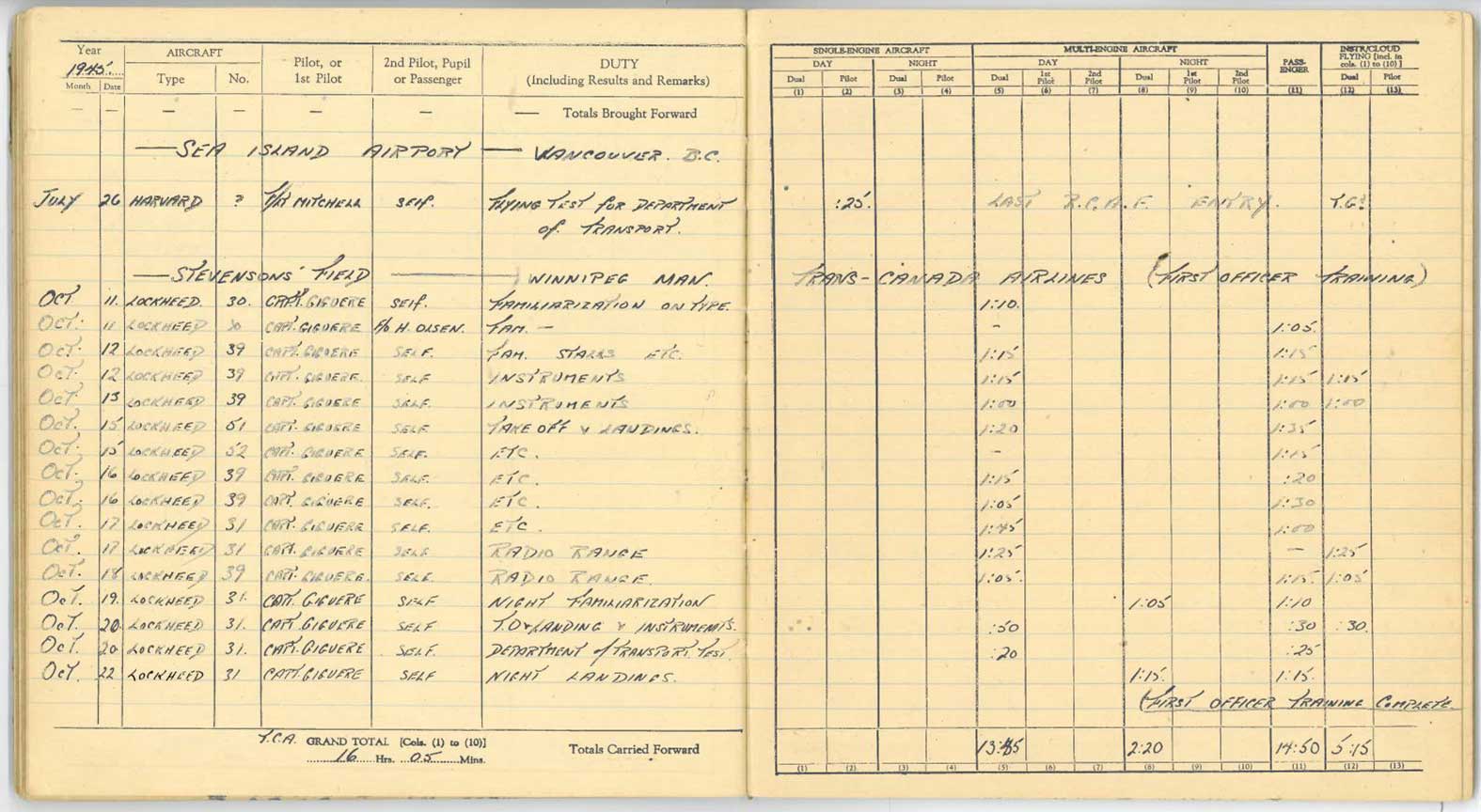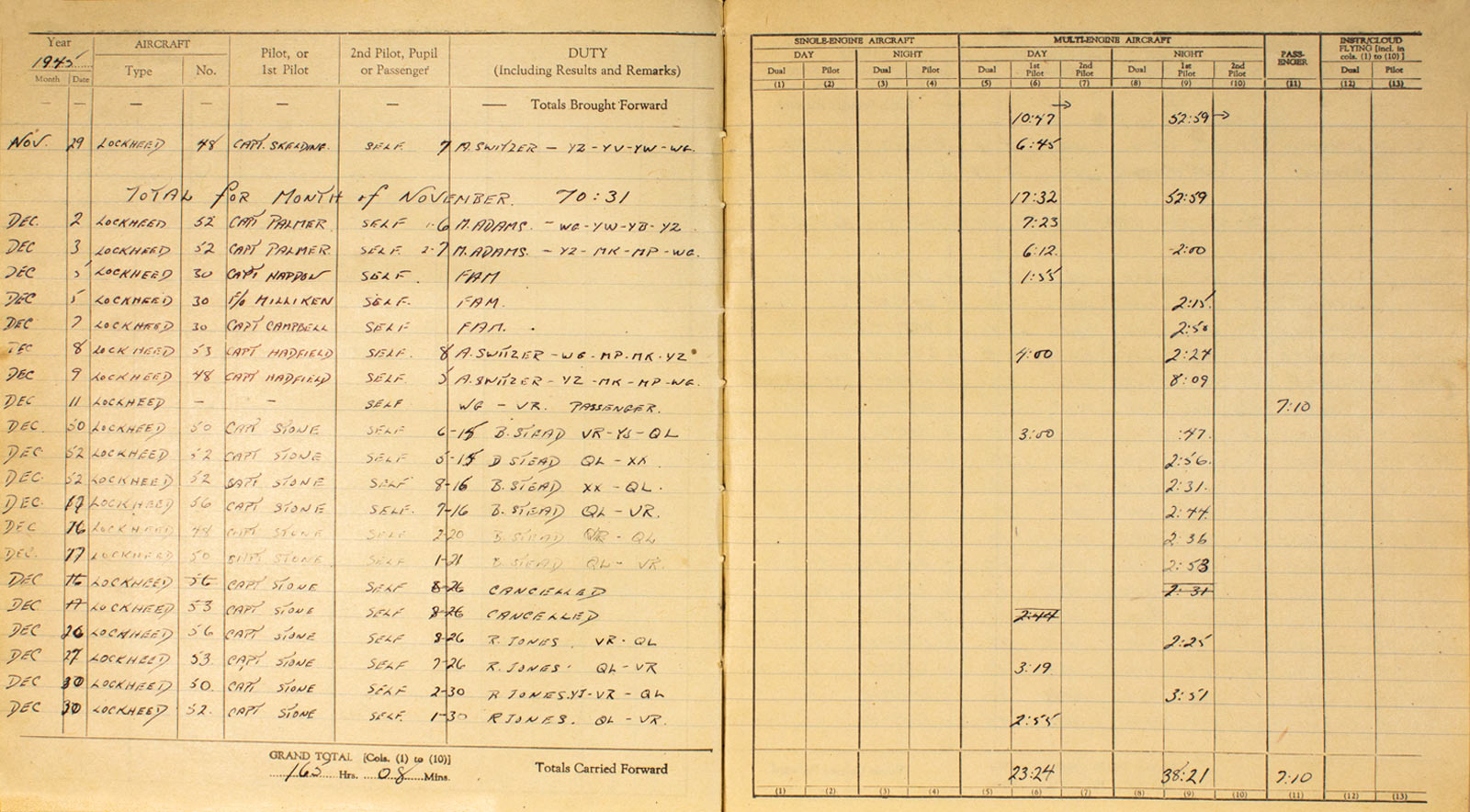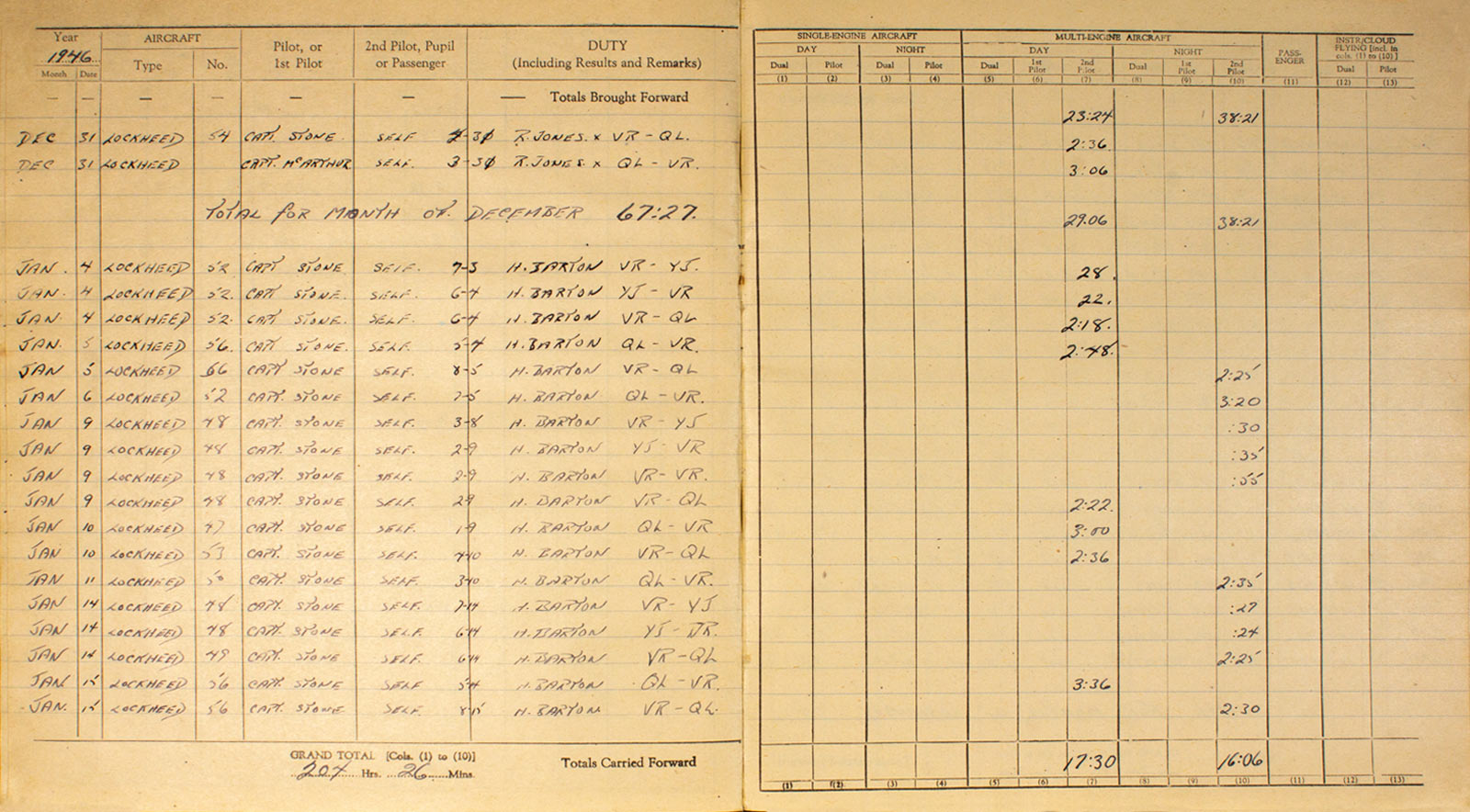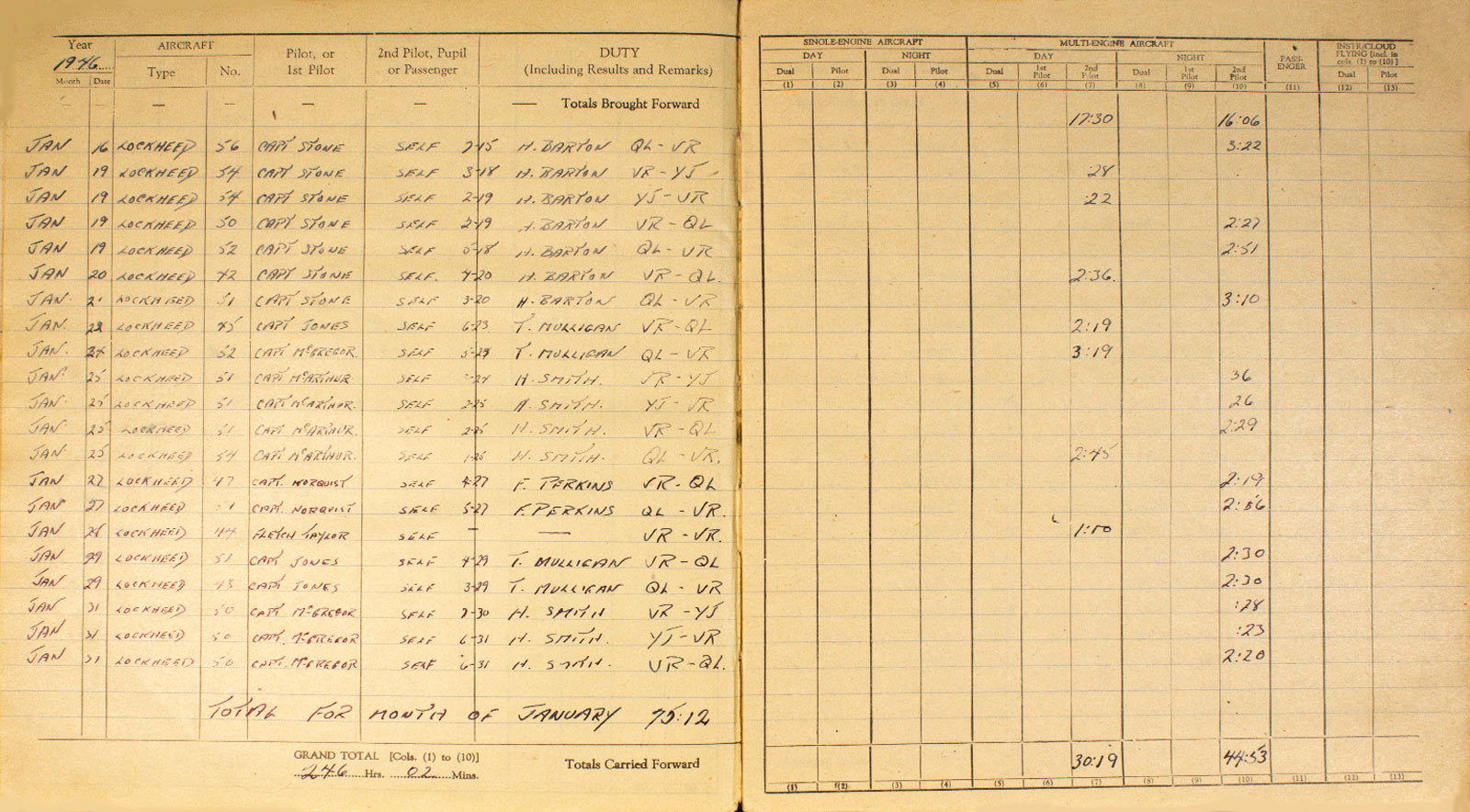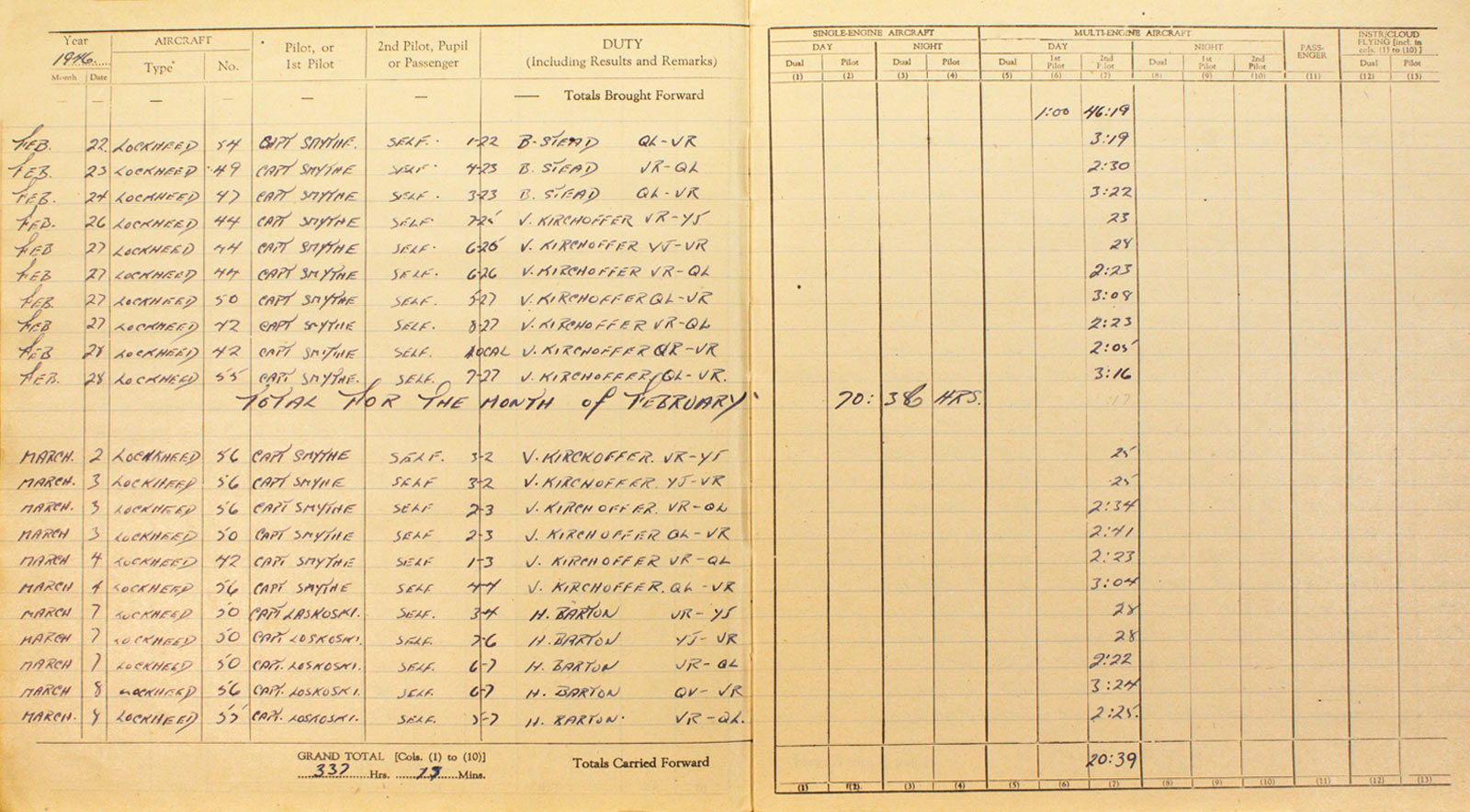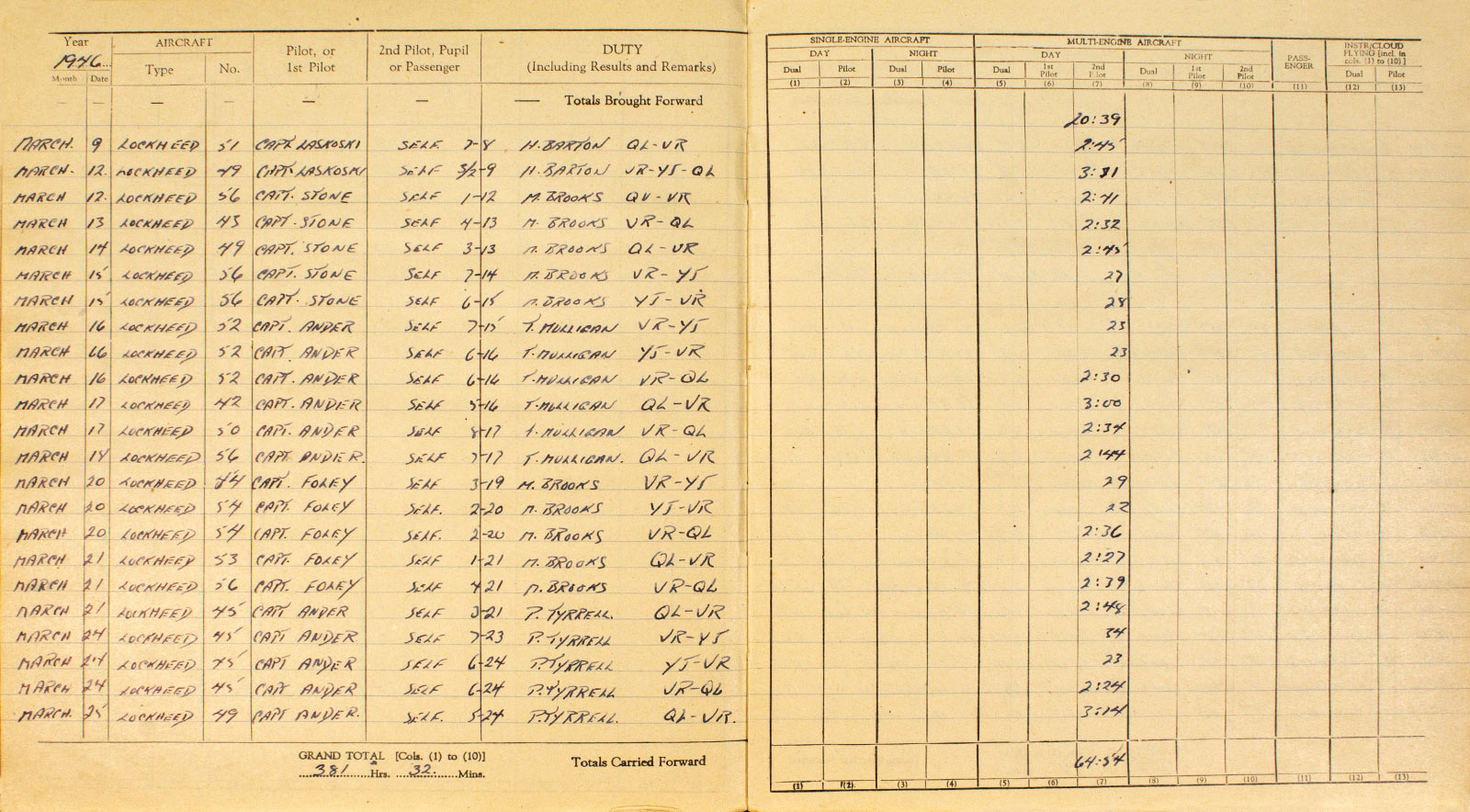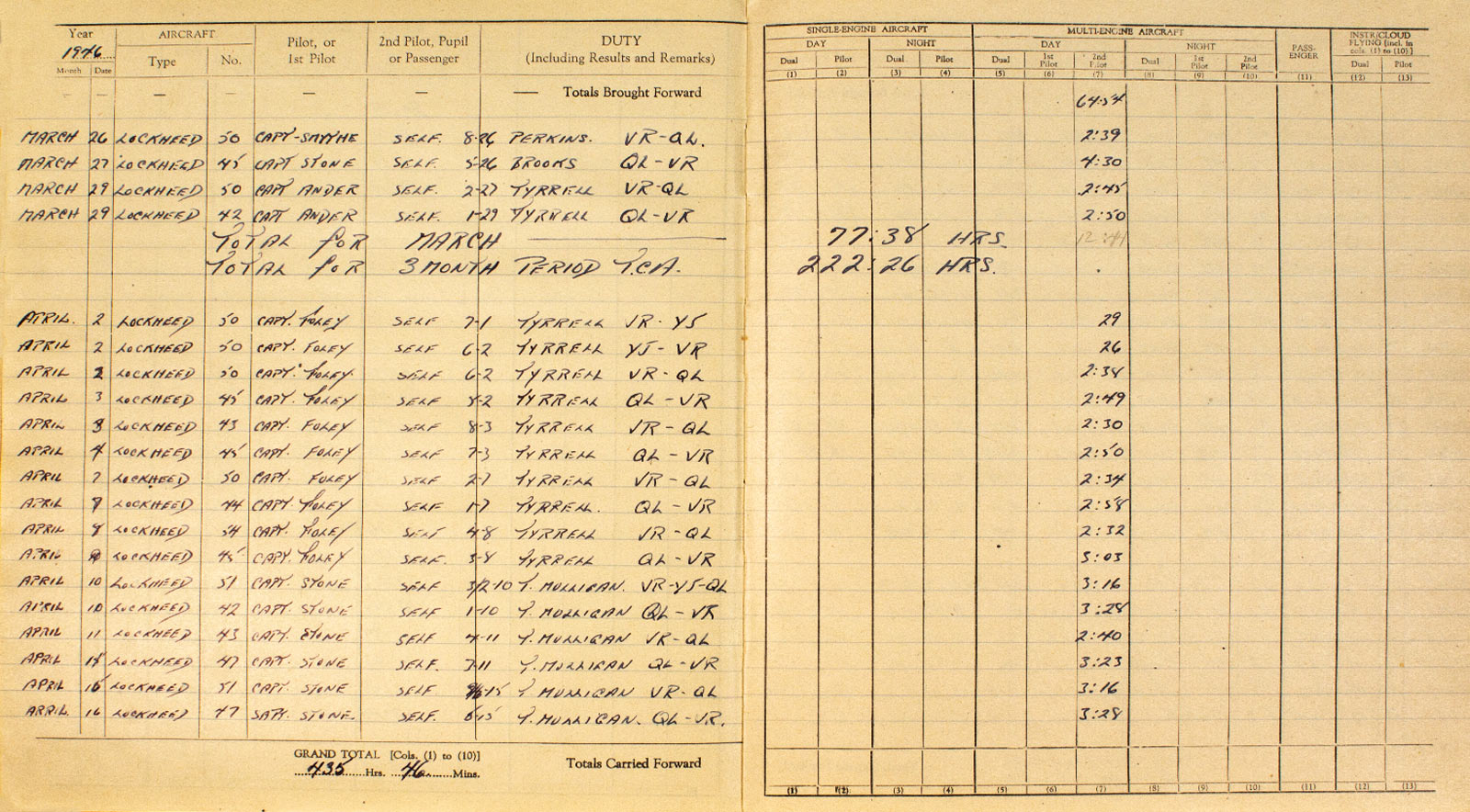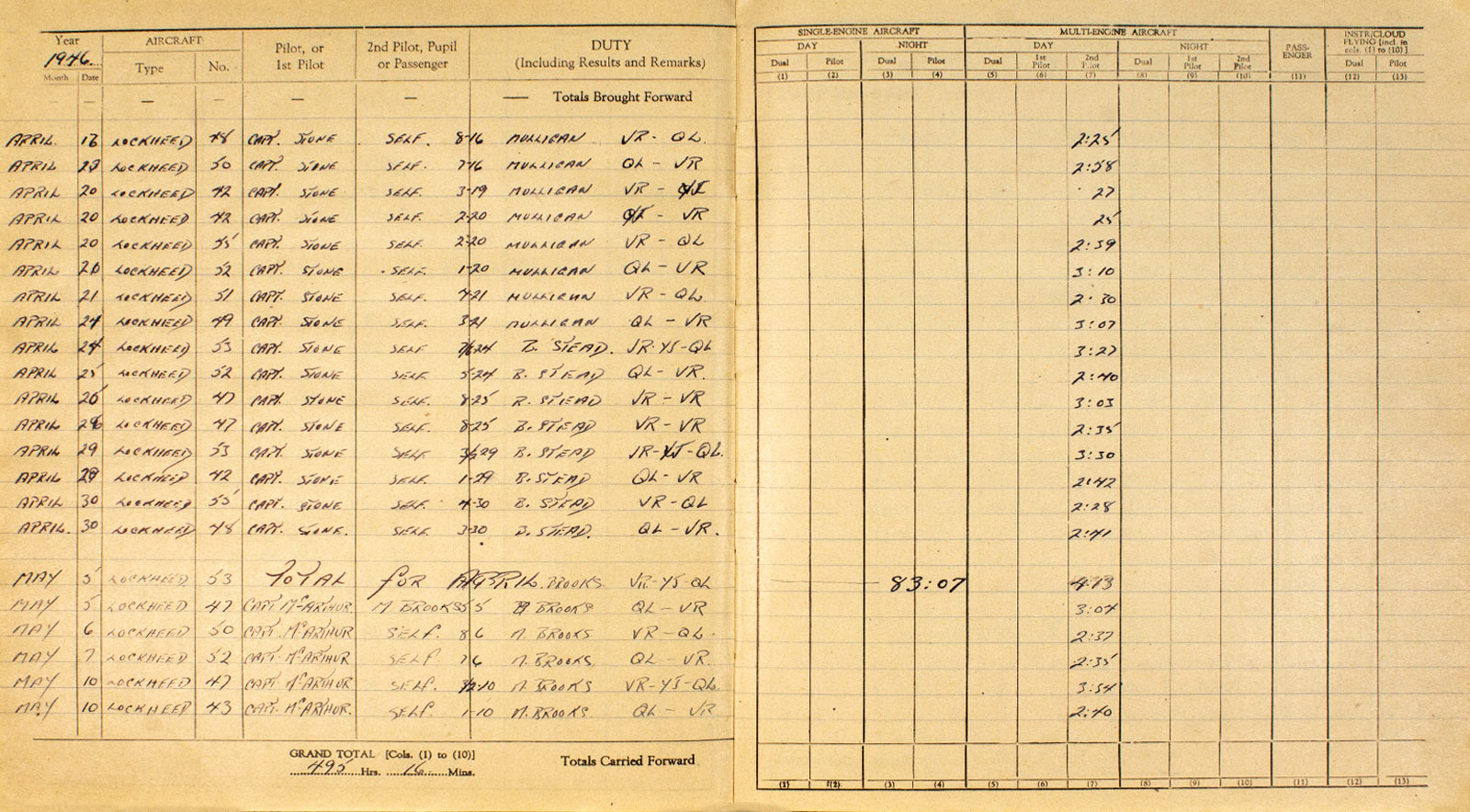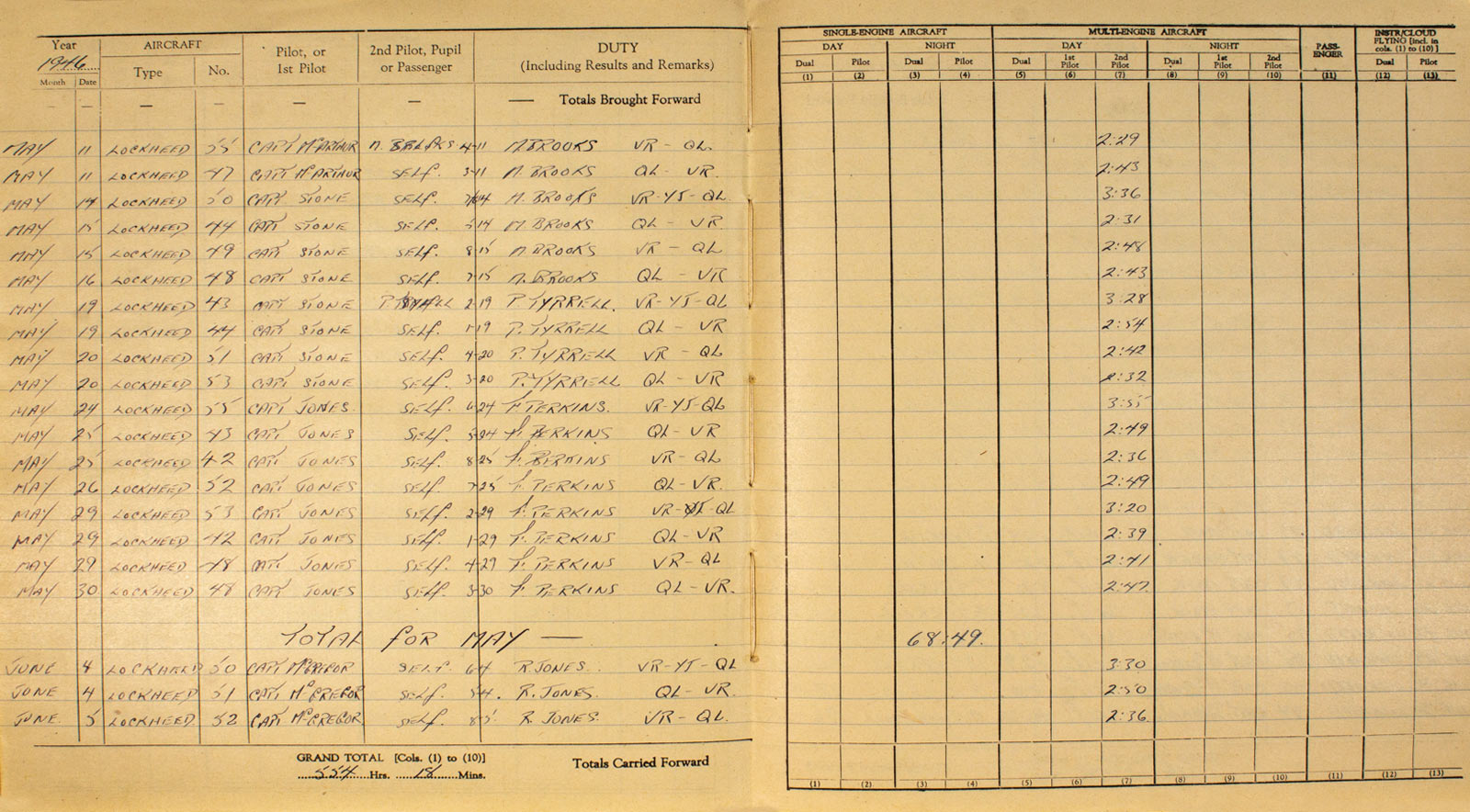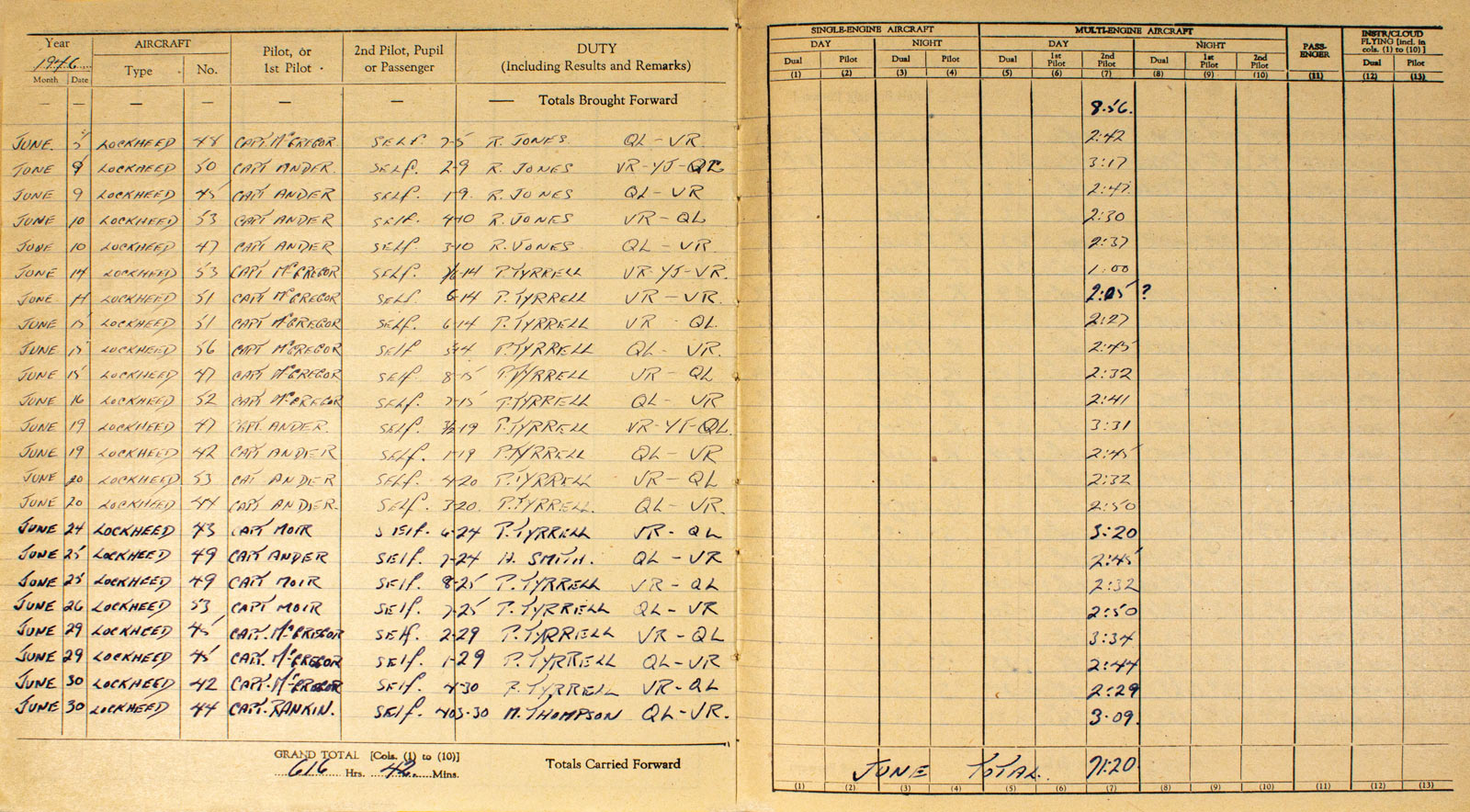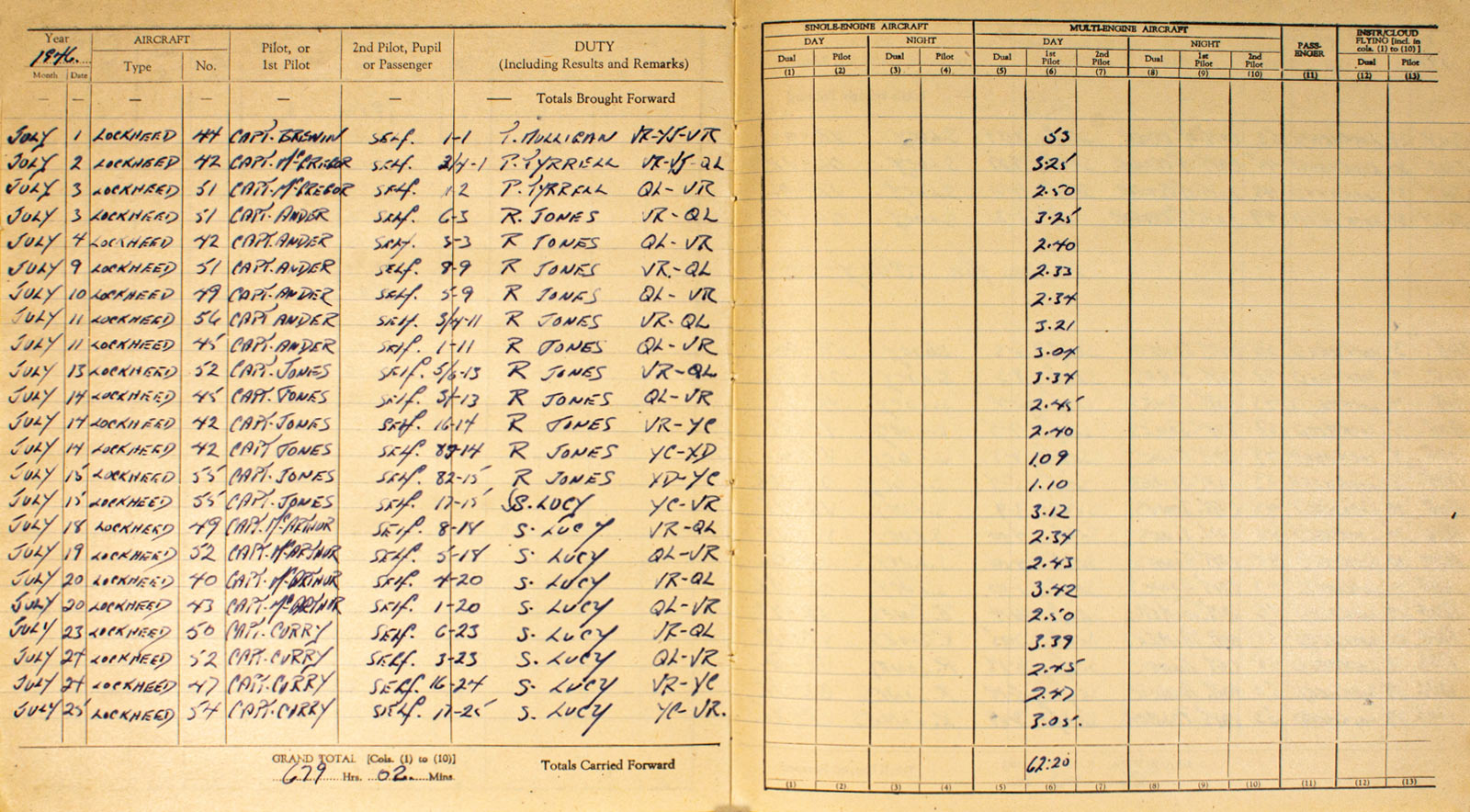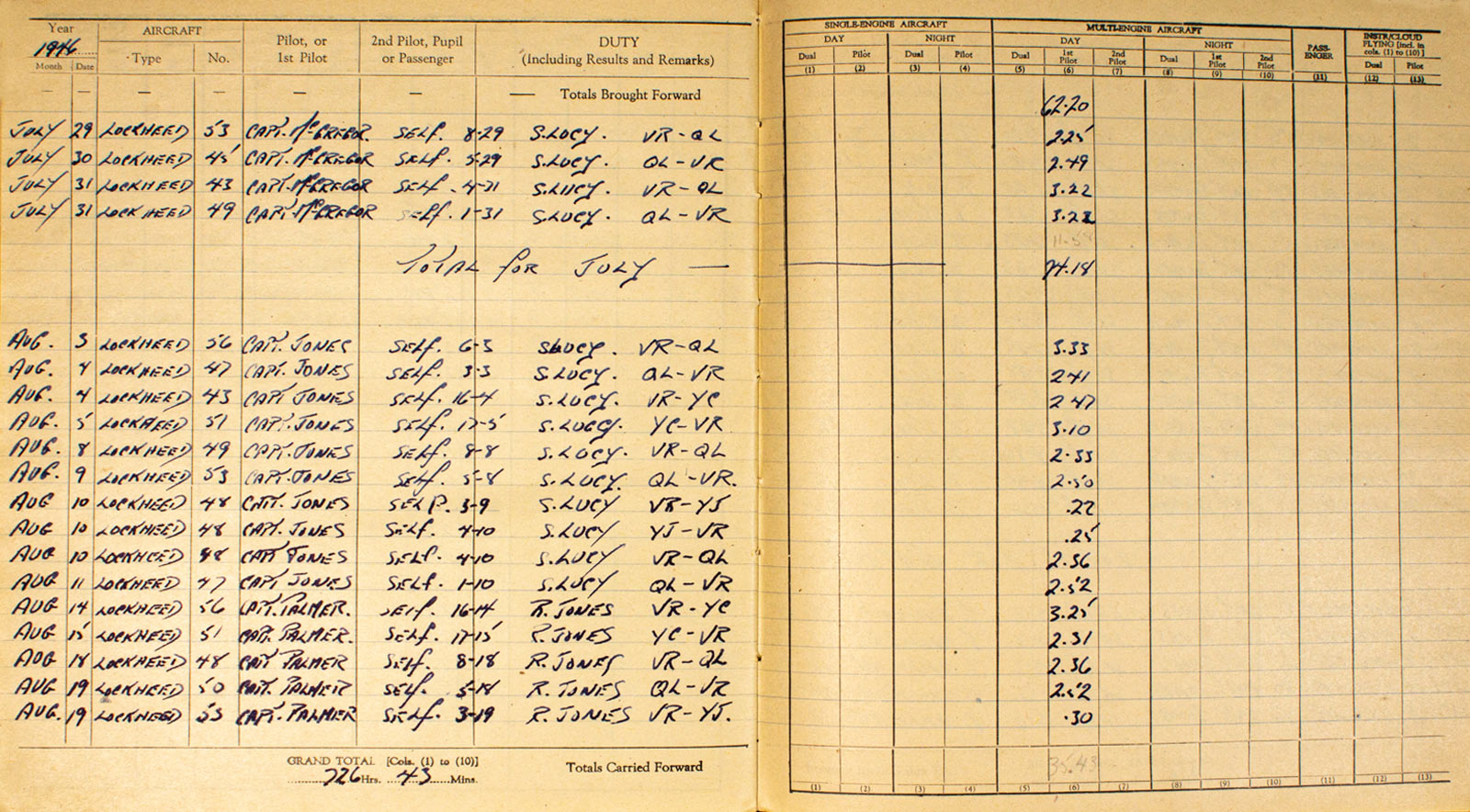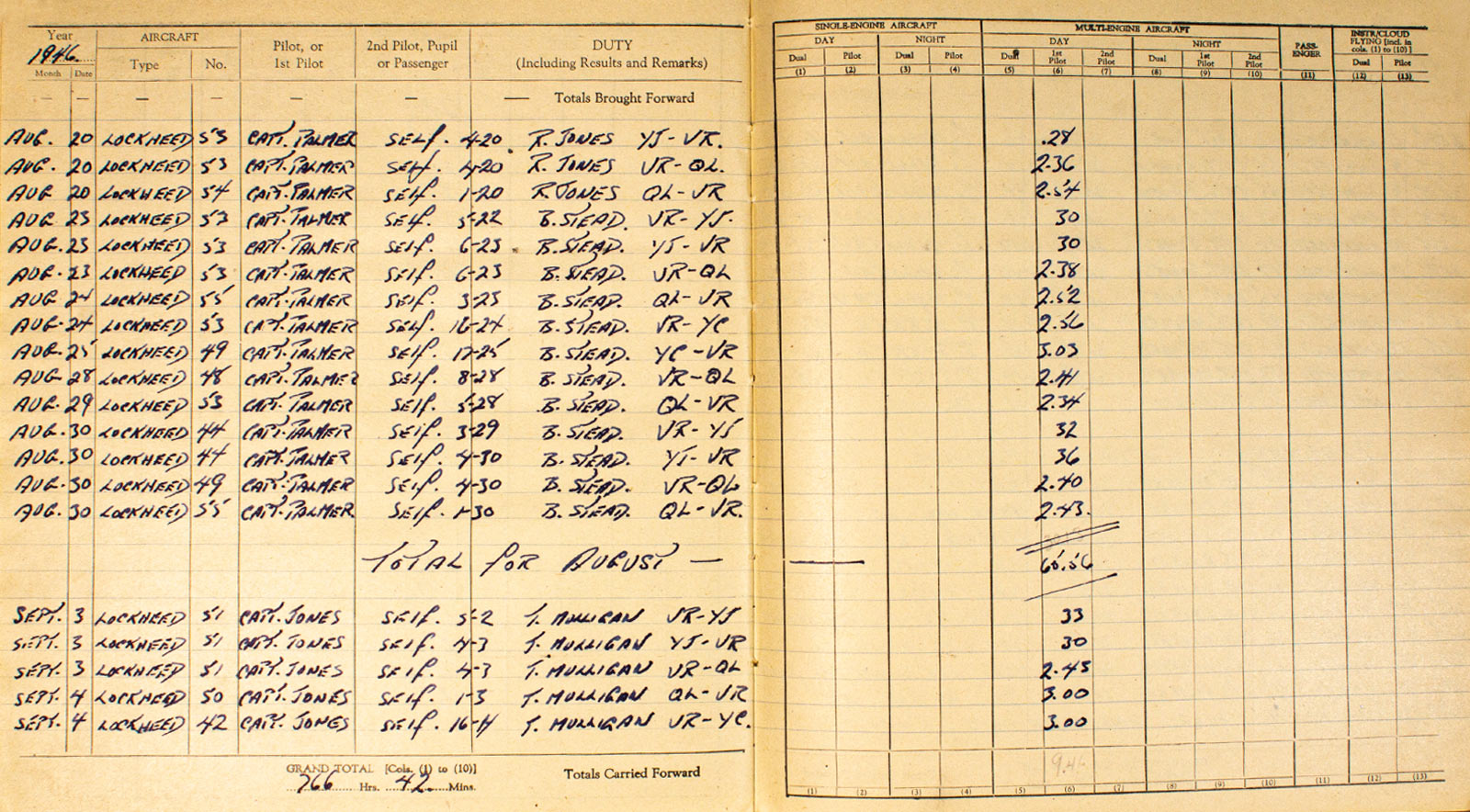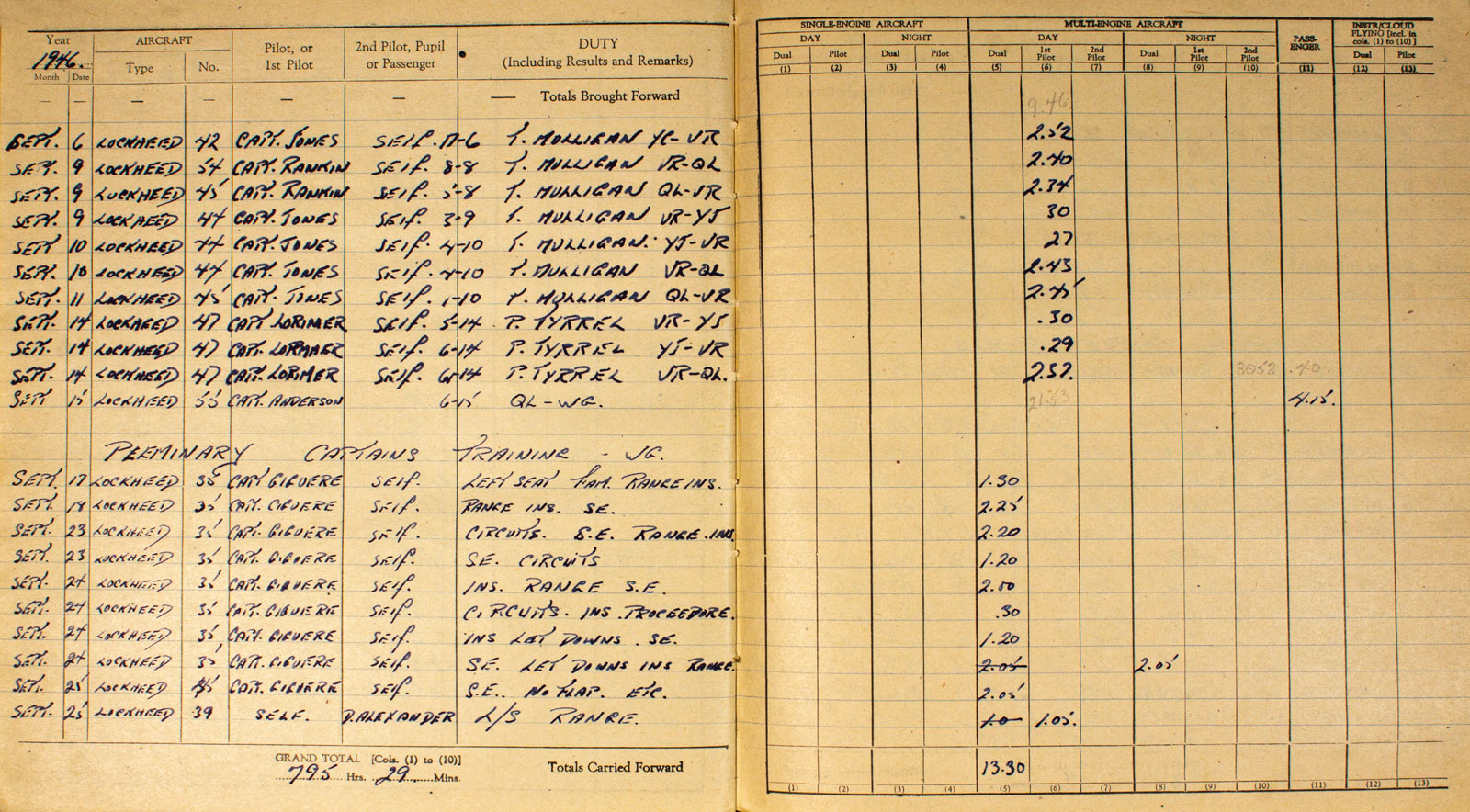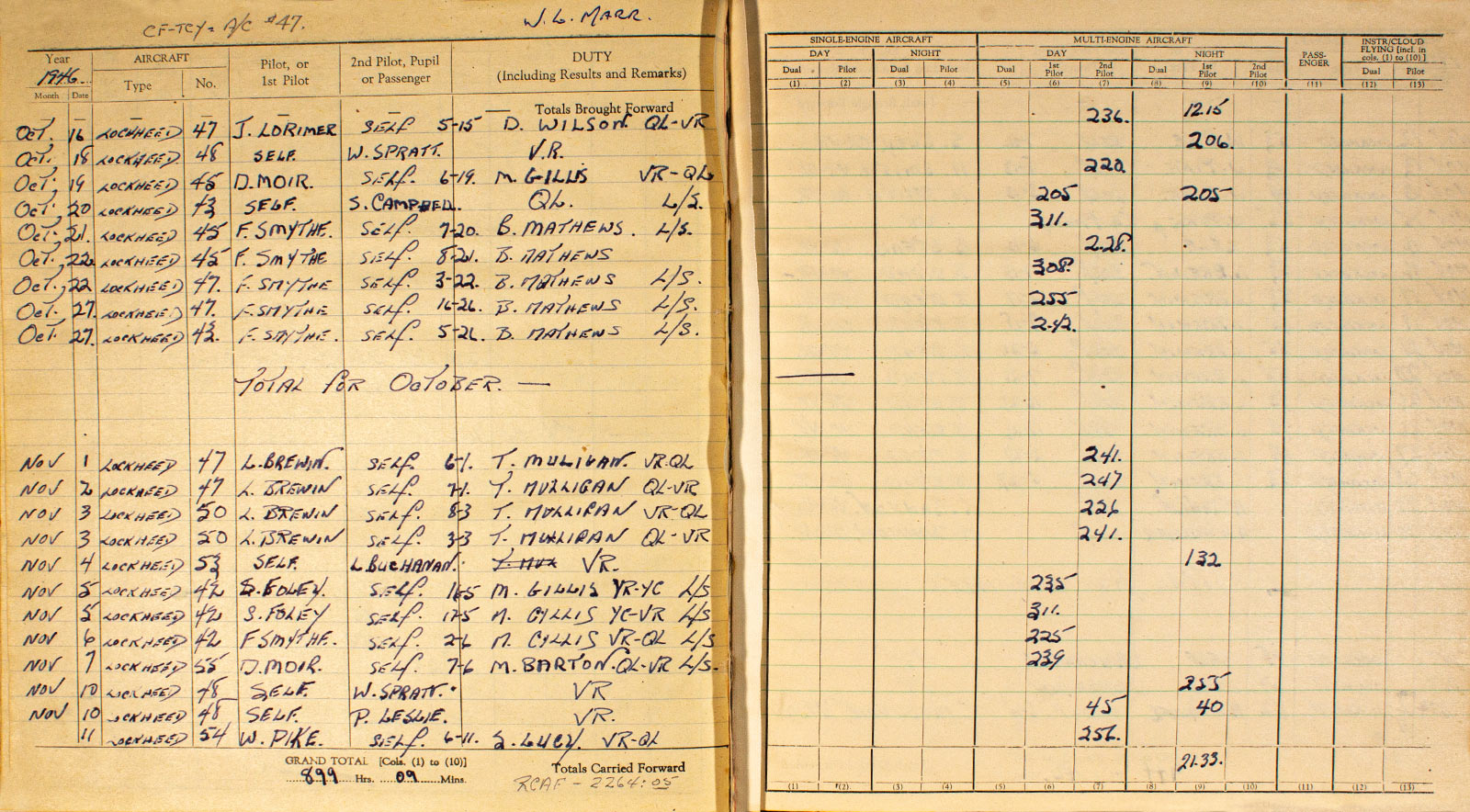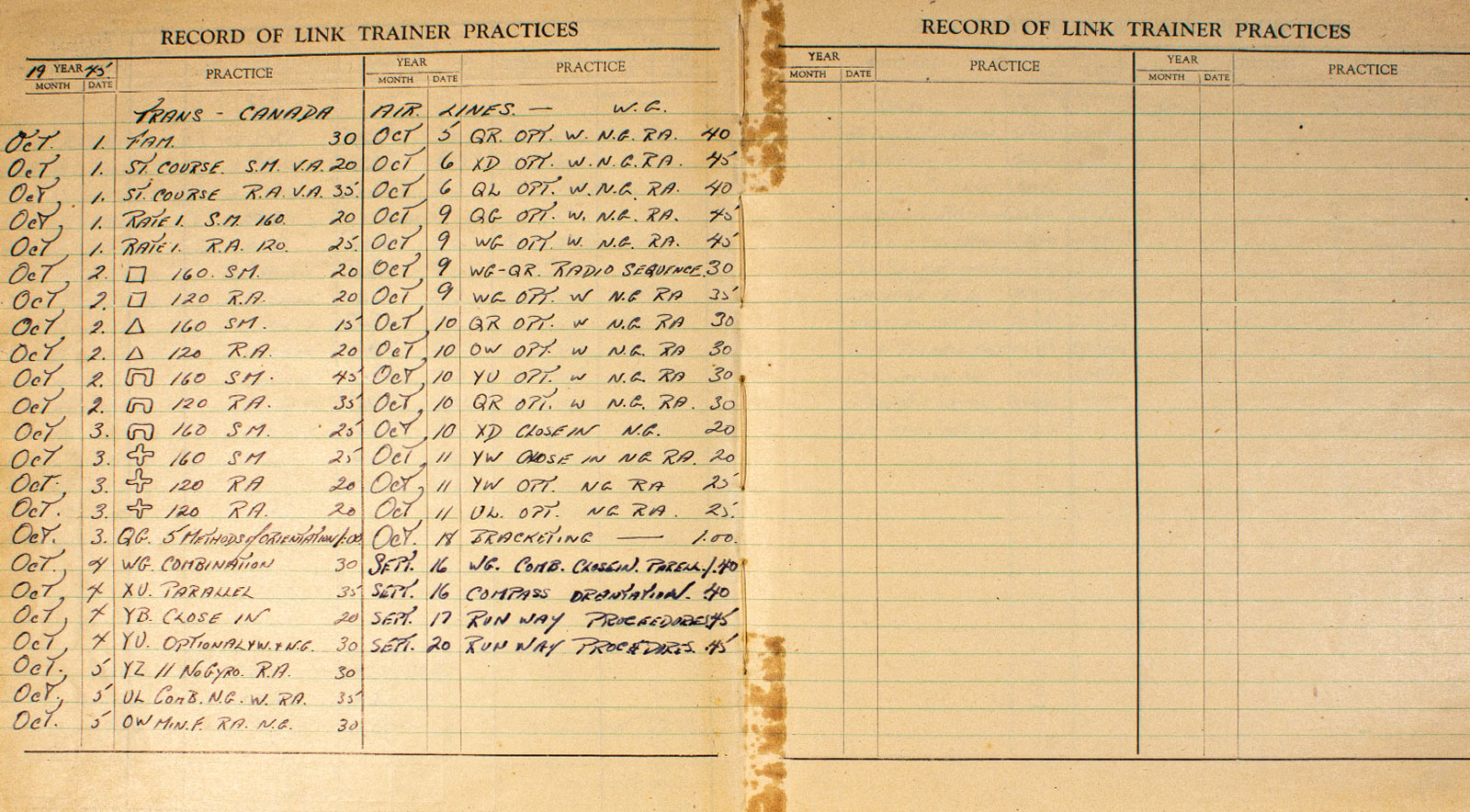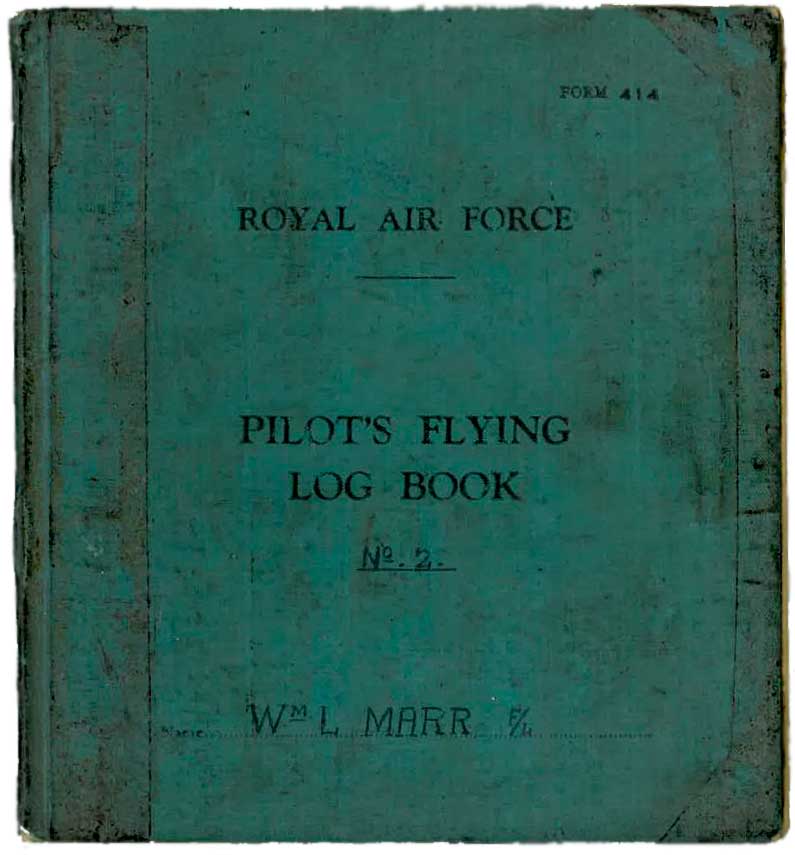
Grandpa said that the crews were allowed to chose their own mates. In the beginning he flew with a few whom he felt were not up to the job. But when he flew with Joe he had confidence in him, he felt Joe knew his job and he was a easy to get along with.
Apparently Joe’s major fault was that he was a “ladies man”, being French and all, and Grandpa, being a conservative farm boy with little experience of the world, found Joe embarassing at times. In short, Grandpa was a prude!
Dad and Joe ready for a flight standing beside their Beaufighter VI. Off to war in shirts and ties! How the world changes.
Log Book 2 – On Ops
We pick up Log Book 2 on December 27th of 1943. Grandpa is flying with 409 Squadron mainly from Acklington near the coast of Northern England on the North Sea. The Squadron is flying Beaufighter VI’s outfitted as nightfighters.
By this time Grandpa and Joe Carpenter have formed up as a team and were getting along well.
409 (RCAF) Squadron – RAF Base Acklington (Con’t)
RAF West Malling (14 May to 18 June 1944)
As the June invasion approached 409 began to move as we shall see. I assume that they were travelling light and their servicing shops, spare parts, and permanent fices were not travelling with them, probably just armorers, ammunition and fuel facilities. As the front moved forward the squadron occupied airfields as close to the fighting as possible.
RAF West Malling was a landing field used during the First World War known as Kingshill. Between the wars it was a private airfield known Kinghill, then West Malling Airfield and in 1932 was named Maidstone Airport. The field was near the town of West Malling which is in Kent about 40 km south west of London.
In 1940 the RAF took over the field but it did little during the Battle of Britain as it was badly damaged by several bombing raids as the German airforce tried to neutralize the RAF in the latter part of 1940 and 1941.
Later in the war West Malling became very active and was an important night fighter base.
RAF Hunsdon (19 June – 23 August 1944)
RAF Hunsdon was purpose built for the Second World War from October of 1940 thru March of 1941 at which time it became operational. The airfield is near the small village of Hunsden in Hertfordshire about 34 km North East of London.
RAF Hunsdon became an important air defense base, especially night fighters, and as the attacks on England wound down it became an offensive base for air operations over Europe. When the war ended the airfield was quickly shut down and the land returned to agriculture. Little remains of the airfield today except a microlight flying club that uses a small grass strip on the old main runway.
Current Crest of the Village of Hunsdon with a Mosquito aircraft in lower left corner.
(B-17) Carpiquet, France 24 August to 10 September 1944
Aircraft need places to land, especially in war. Fighters are not known for endurance when it comes to fuel. And their ammunition is very limited. Only a few seconds of continuous fire. So they need to land and refuel and rearm frequently. And the bombers need a place to come down when they are damaged or out of fuel. An so, one the invasion bridgehead was established airfields in Normandy were a necessity and a priority.
Sometimes the engineers simply cleared a grass field and constructed facilities along the edge. Other times existing airfields were captured and pressed into service for the Allies. By the end of June a dozen airfields had been created or captured and pressed into service. Because crews of aircraft had to find these landing places they were named by number for easy reference. British and Commonwealth airfields were assigned a number beginning with a “B” followed by a number, the numbers being assigned in order from 1 on. American airfields used the letters “A”, “Y” or “R” followed by a number.
Carpiquet is a village 5 km west of Caen. There is an airfield there that was used by the French airforce before the war and by the Germans after 1940. The Canadian army during heavy fighting from July 4th to 9th captured this airfield or rather what was left of it. Allied bombing had rendered it inoperable (to put it mildly!). The Royal Engineers, 24th Airfield Construction Group worked on it from July 13th to August 8 when it was declared fit for use.
(B-24) St. Andre, France (11 September to 26 September 1944)
The airield at St. Andre de l’Eure was built in the 1930’s as the municipal airport for Haute-Normandie. It was located about 122 km East of Caen. Seized by the Germans during the Battle for France in 1940 it became a major air combat field for them. From June of 1940 they upgraded the field with concrete runways and hardened support facilities.
St. Andre was a frequent target of Allied bombing and when captured by the Allies in July of 1944 it was in pretty bad shape. It was brought back to operational status by American engneers and turned over to the British as B-24.
409 Squadron flew into St. Andre’ on September 11th to stay close to the fighting front.
(B-48) Glisy, France (27 September to 3 October)
Amiens-Glisy Aerodrome serves the City of Amiens which is in the Somme Department of Picardy in France. The field is about 7 km South East of the City. The field was captured by the Germans in 1940 and was used by them throughout their occupation of France. It was heavily bombed by the Allies in 1944.
The field was liberated by the British 2nd Army in Agust of 1944. As 409 followed the advancing front they arrived at Amiens-Glicyon on 27 September when they operated until 3 October when they moved on.
(B-68) ALG (Advanced Landing Ground) Le Coulot, Belgium (4 October to 11 October, 1944)
The airfield of Le Culot is 6 km South of the Village of Beauvechain in Belgium. It was established by the Belgian airforce in 1936 as Le Culot Airfield and was captured by the invading Germans on the 10th of May 1940. It was a major airfield of the German Airforce during the Battle of Britain. As the war progressed it was intensively bombed by the Allies.
The field was recaptured by the Allies in early September of 1944 but heavy damage brought about by bombing it took a few weeks to bring the airfield up to operational status. It was used as an Allied forward base until October when it was turned over to the Americans and redesignated as A-89 ALG.
(B-51) ALG Lille-Vendeville, France (12 October 1944 to 18 April 1945)
In 1939 Squadrons of the British Expeditionary Force were stationed at Lille-Vendeville. As the war began and the Germans began to advance on Lille they left on May 19, 1940, and the Germans overran the field on 28 May. Because of the location of the airfield, Flugplatz Lille-Vendeille, only 67 km from the channel, the Germans upgraded the field tripiling the runways area and building dozens of hangers and support buildings around the field. All of this was later subjected to heavy bombing by Allied airforces and beforeleaving the base to the Allies many of the remaining facilities were destroyed by the Germans.
he airfield was liberated by the British Army after heavy fighting on 3 September 1944. By mid September Allied fighter aircraft were operating out of Lille-Vendeville but, as the front was moving forward quickly, they were gone in a matter of weeks. The the nightfighters moved in and operated from there until April of 1944.
Grandpa flew into B-51 on18 October 1944 and he was there until the end of his operational tour which came on the 6th of November after 146:35 of operational flying. But there is no rest for an experienced pilot and he was posted to No. 51 Operational Training Unit as an instructor which we shall get into below.
RAF Cranfield
Grandpa’s “Ops” tour ended on the 10th on November 1944. He was an experienced combat pilot with a reputation as being “an exceptionally fine pilot”. And he was an experienced instructor. It is no surprise then that he was posted to No. 51 Operational Training Unit to instruct.
RAF Cranfield was constructed in 1936 and 37 as Britain ramped up its military resources for the coming war. It opened officially on 1 June 1937. Initially bomber and fighter squadrons were stationed there and it was heavily attacked by the German air force during the Battle of Britain.
In August of 1941 No. 51 Night Fighter Operational Training Unit moved in and remained there for the remainder of the European war.
On Tuesday the 8th day of May 1945 the Allies accepted the unconditional surrender of Germany: Victory in Europe Day. The war was over.
Home and Air Canada
One of Grandpa’s friends flying with him in England had acquantances at home in Canada who were involved with Trans Canada Airlines. He had been asked to come and fly for the airline when he returned home and he knew they were looking for other pilots. So this friend suggested Grandpa look for a job with TCA. Grandpa followed up on this suggestion and by the time he had returned to Canada he had a job lined up with the airline.
Old habits die hard and so Grandpa kept up his log book for his first several months with TCA. I actually get the impression he was nostalgic for the excitement of wartime flying. I include these pages here for completelness although they are not about grandpa’s war service.

